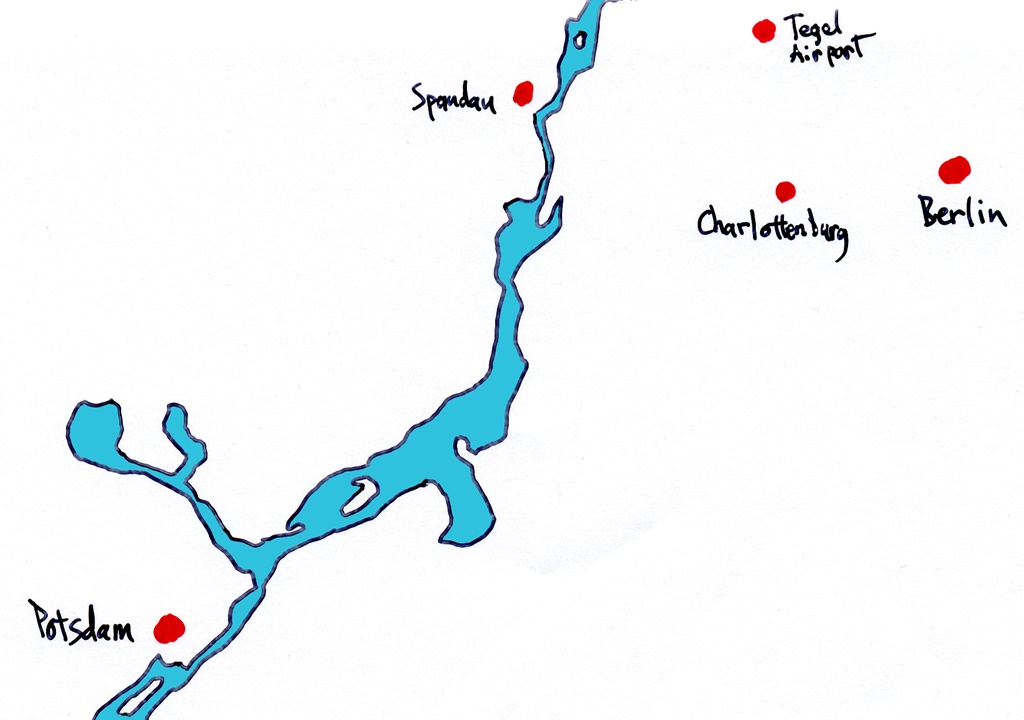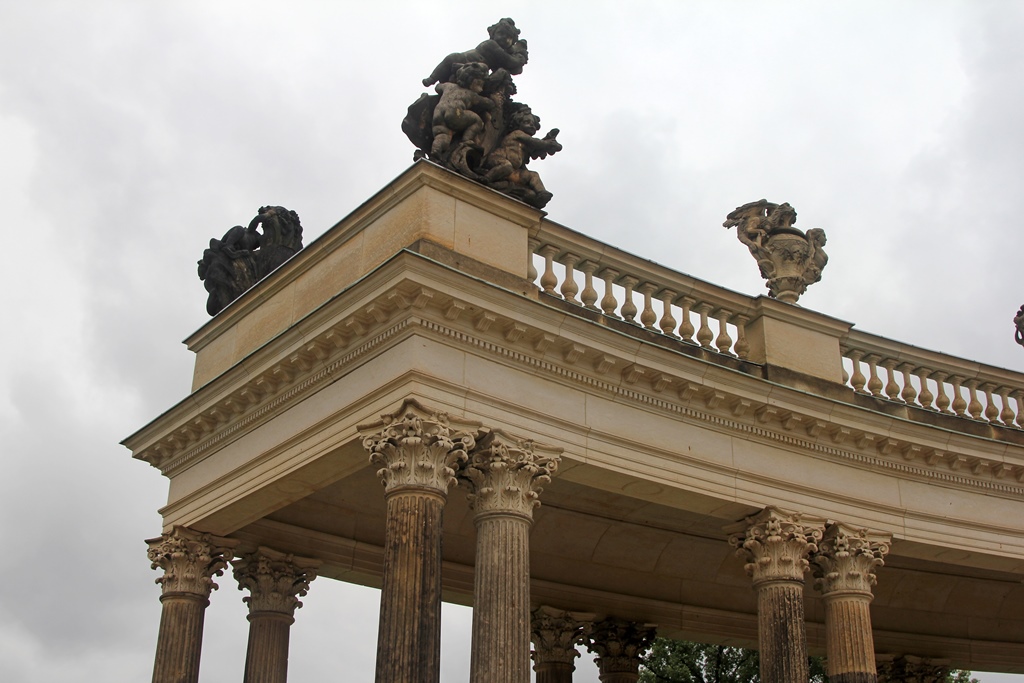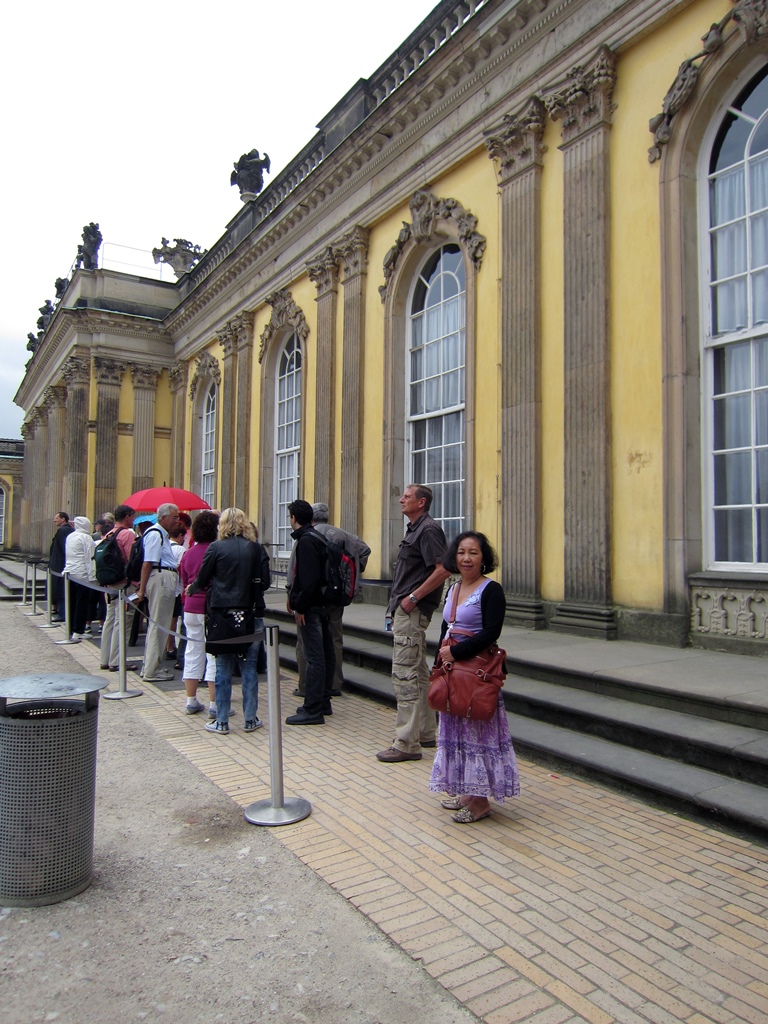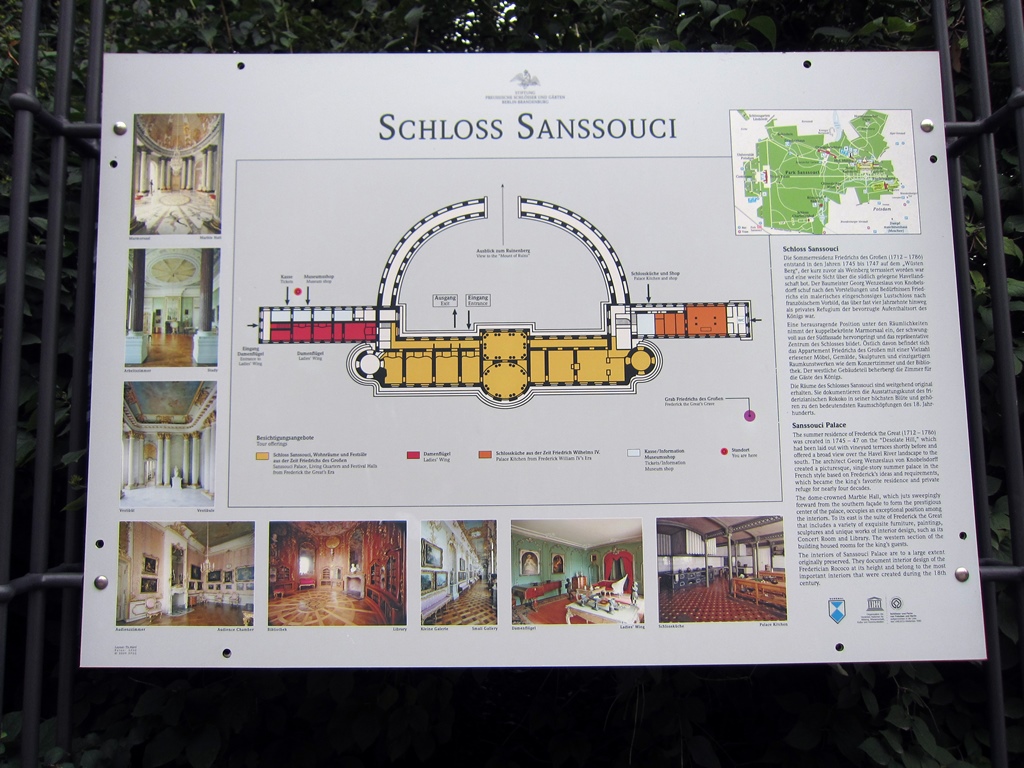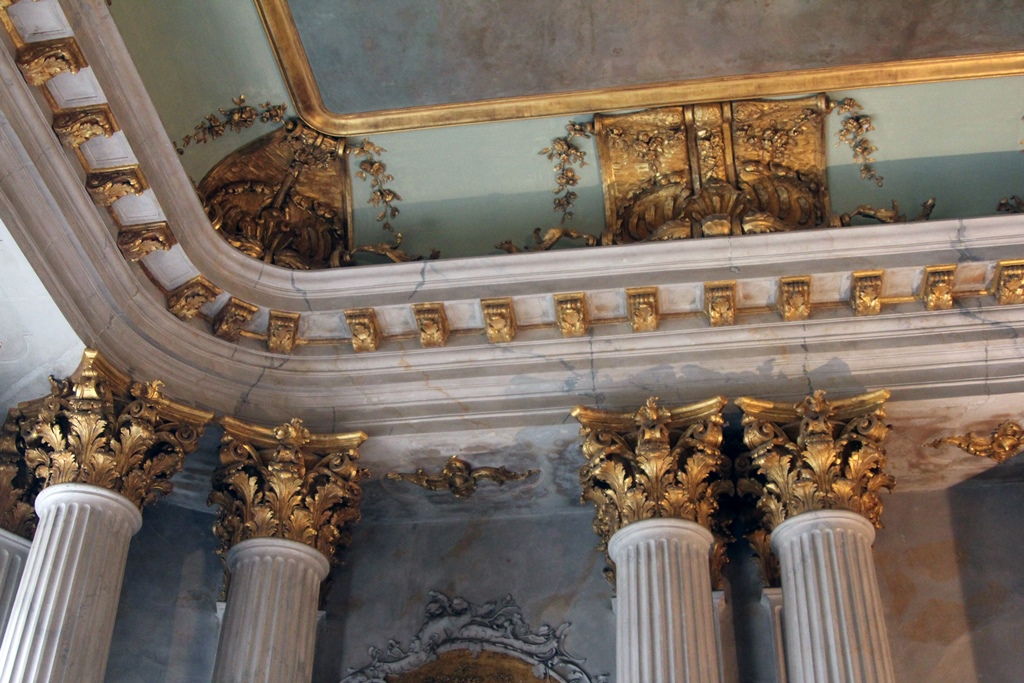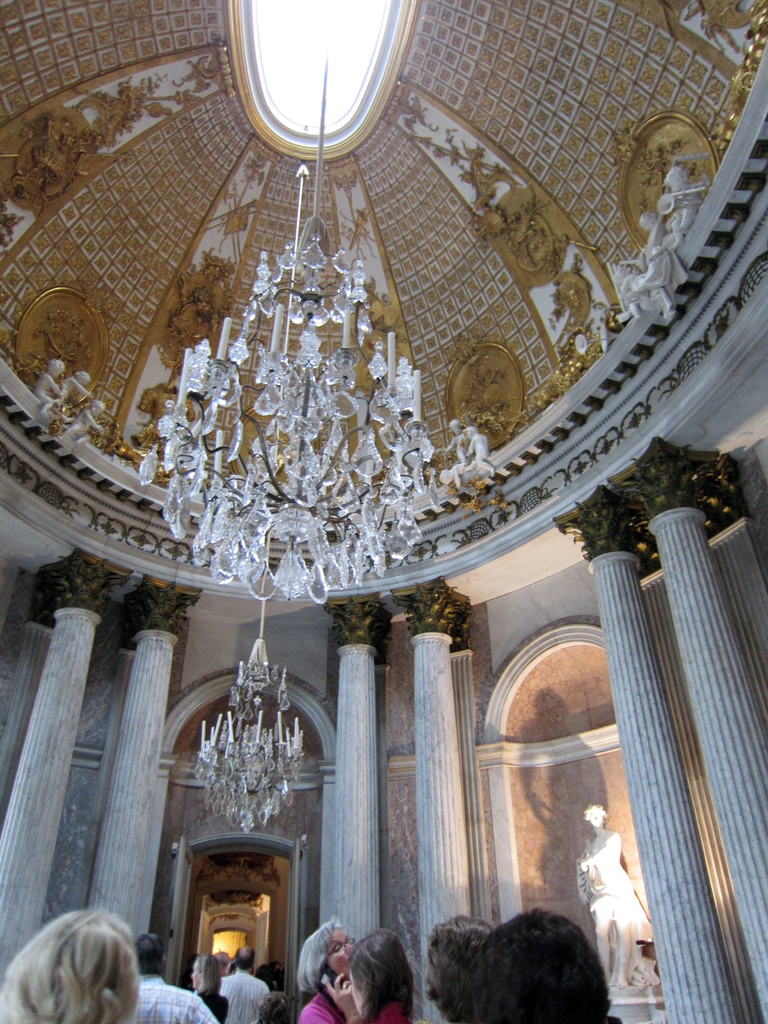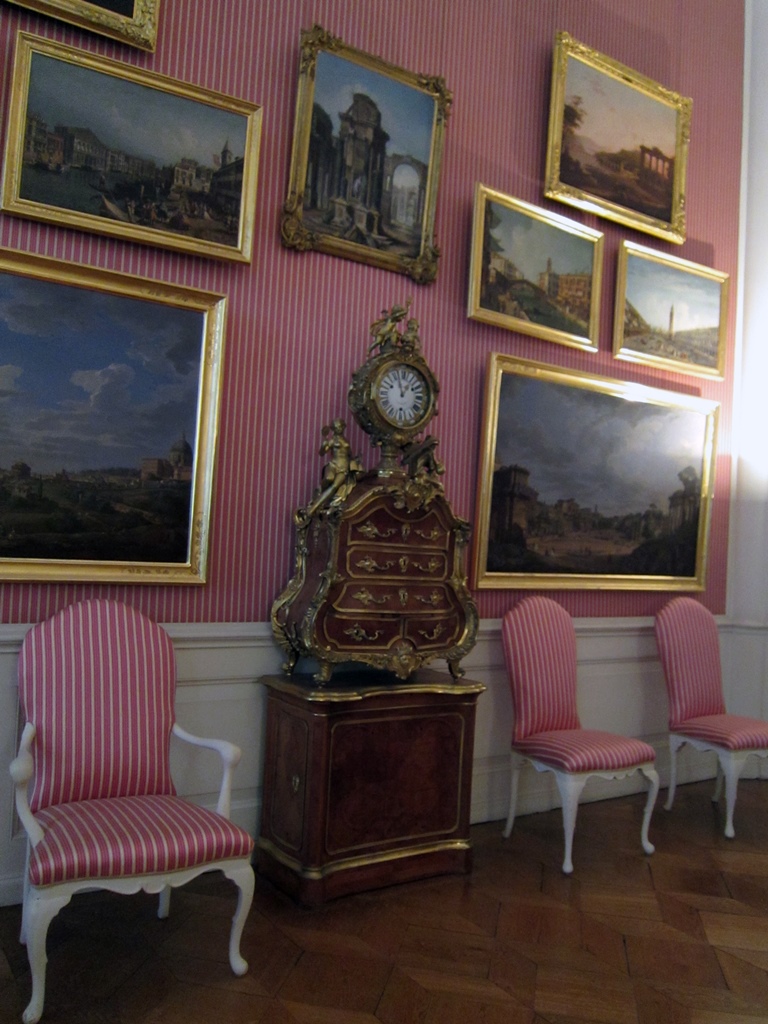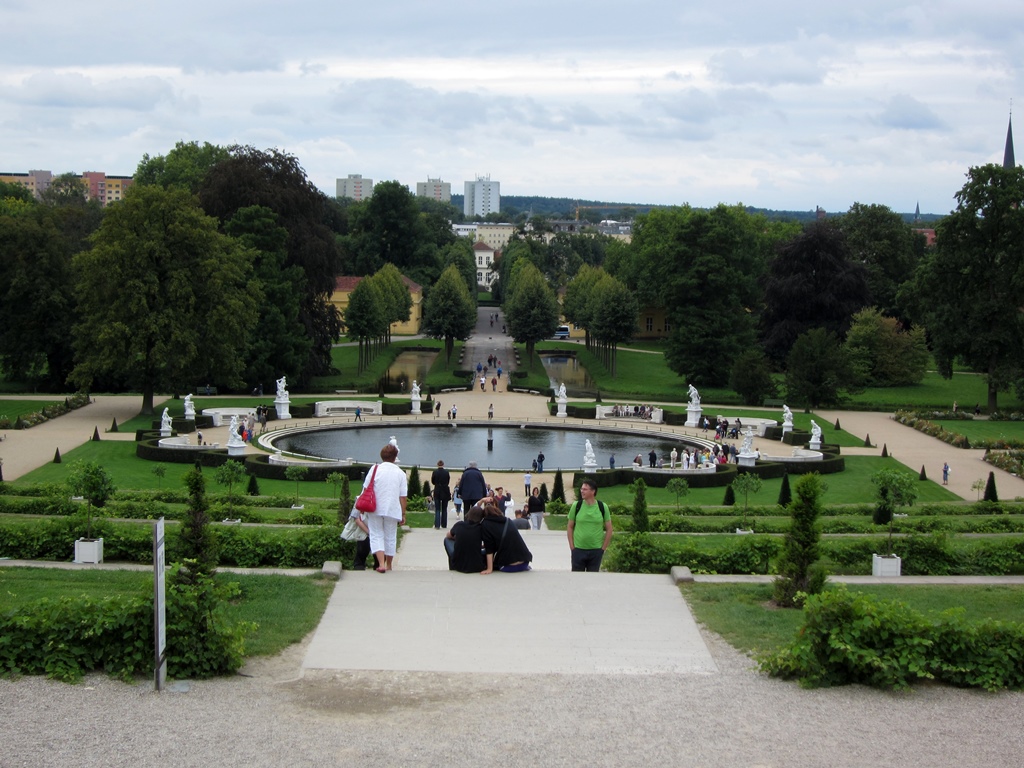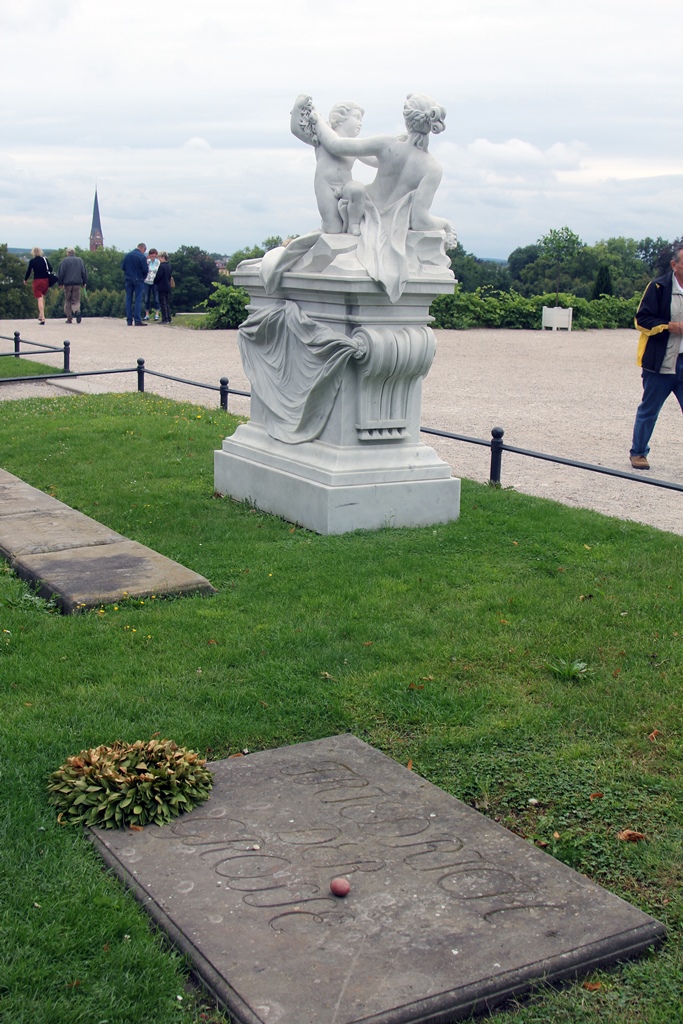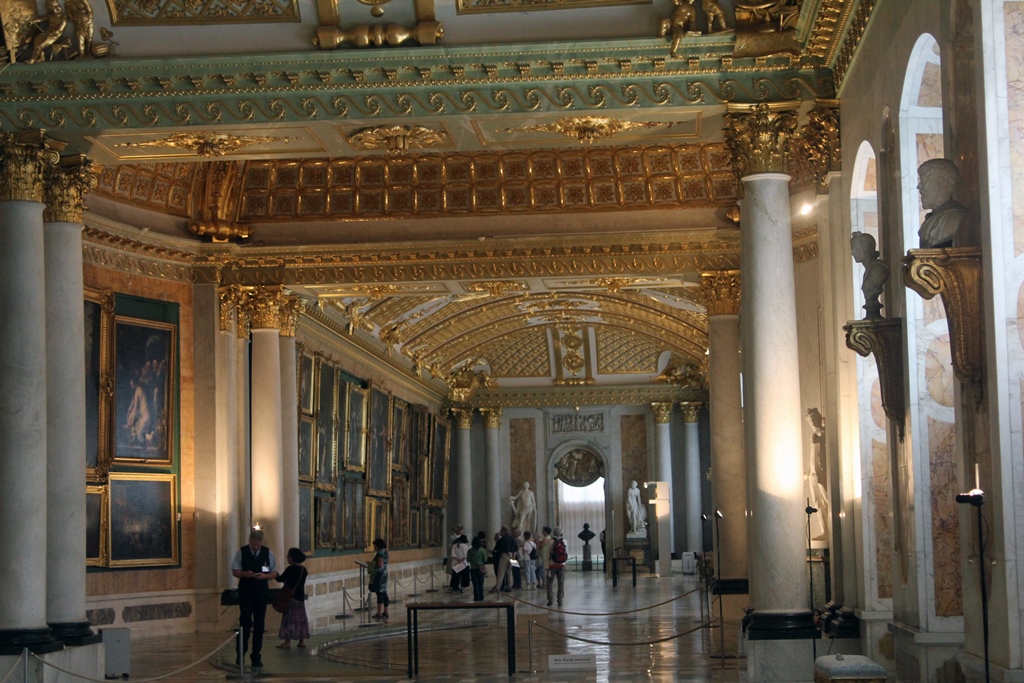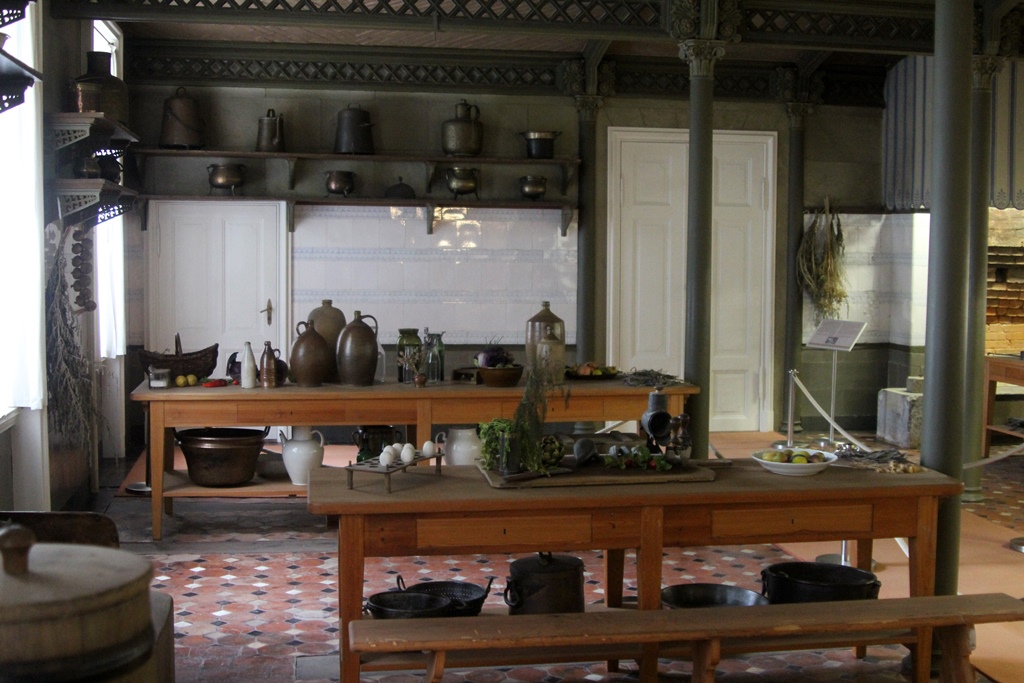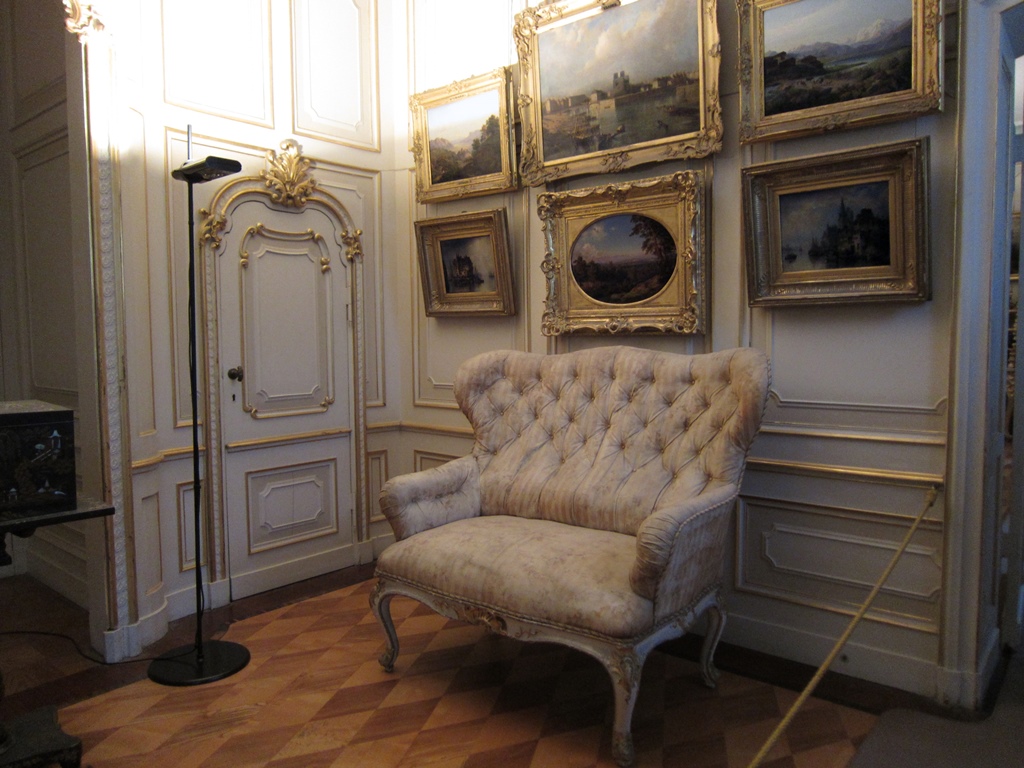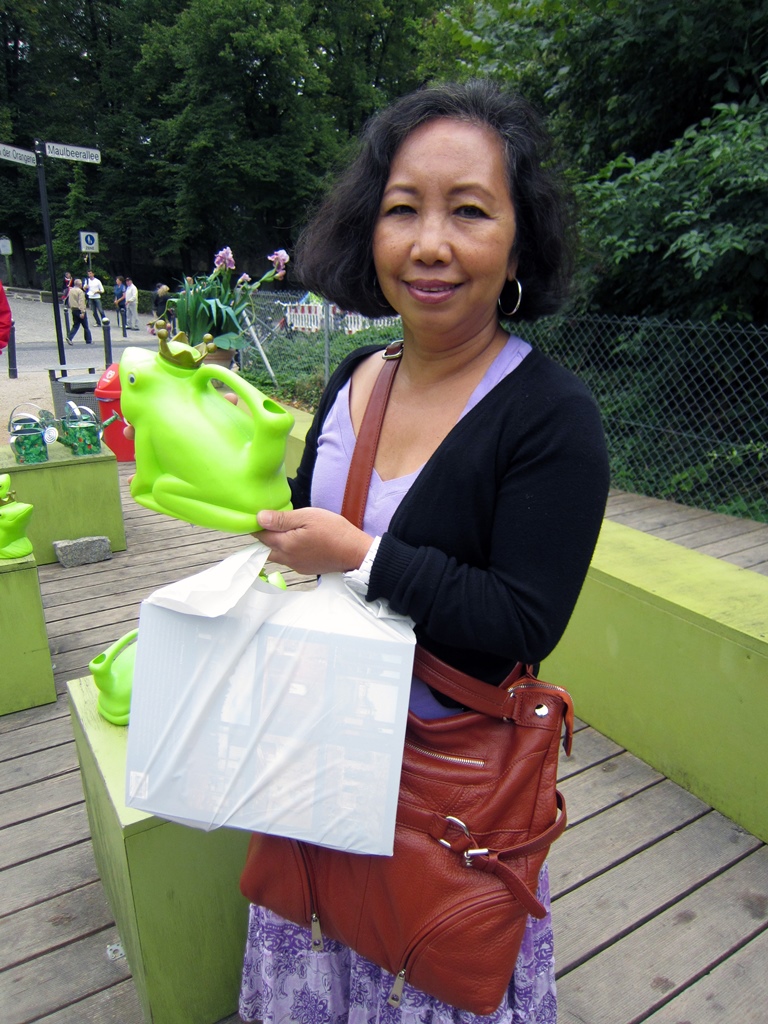Berlin Metropolitan Area
Potsdam is a city of about 160,000 people which is located 15 miles southwest of central
Berlin. While Berlin occupies a German state of its own, Potsdam is the capital of the
neighboring state of Brandenburg. It is situated on the river Havel, and is surrounded by
several lakes. Potsdam has been the site of several historical events – Napoleon passed
through the town, Hitler and then-President Hindenburg concluded an agreement here that
basically turned the military over to the Nazis, and after some horrific years the leaders
of the Allied powers (Truman, Churchill and Stalin) met here to decide on the post-war
partitioning of Germany. The city was long the residence of Prussian and German royalty,
but it really came into its own in this respect during the reign of Frederick II.
Frederick II, commonly known as Frederick the Great (Friedrich der Grosse) ruled
Prussia from 1740 until 1786. He has been admired for a number of accomplishments, not
least of which is the doubling of Prussian territory during his time on the throne. In
his youth he was raised with a strict military upbringing by his father, Frederick
William I. He rebelled against all of the structure, surreptitiously studying literature,
philosophy and the arts, and at one point he tried to escape with some friends who were
lieutenants in the army to the court of his uncle, who was King George II of England. The
attempt failed, with Frederick and one of his friends being captured and imprisoned for
desertion. His father was disgusted with him, and had Frederick’s friend executed (by
decapitation) in his presence. As one might expect, this had a profound effect on Frederick
(though not as profound as the one on his friend), and he was not to repeat his escape
attempt. In fact, he became much more cooperative with his father’s wishes (a good thing,
as his father was leaning toward treating Frederick in the same way he’d treated his
friend). Frederick studied military tactics and statecraft, and even went along with an
arranged marriage in 1733 to a duchess who was a relative of the Austrian Habsburgs. The
marriage was awkward from the beginning, with Frederick resenting the arranged marriage
and apparently not much caring for his new wife. They were kept apart for awhile, but
shared a palace and had a somewhat normal married life from 1736 until 1740.
Everything changed in that year, as Frederick William died and Frederick became
Frederick II, the "King in Prussia", on May 31, at the age of 28. At this time the Queen
Consort Elisabeth Christine was removed to a palace of her own in what is now a northern
district of Berlin (which was to remain her residence for the rest of her life), and
Frederick began to immediately assert himself as King. By October of 1740, Frederick had
disputed the succession of Maria Theresa of Austria to Empress of the Holy Roman Empire,
and by December he had invaded the Austrian province of Silesia. In the ensuing war, and
in later wars, Frederick was to establish himself as a brilliant military tactician, the
result being a dramatic expansion of Prussian territory.
In 1745, between wars, Frederick determined that he should have a palace in Potsdam. He
had very definite ideas about what the palace should look like and how it should be
situated, and a surviving sketch by him shows a picture that is very close to what was to
become the final product. As European palaces go, this palace was to be quite small,
primarily a residence, rather than a place to entertain throngs of visitors. It was
completed in 1747, and it was called Sanssouci (from the French phrase sans souci,
or "without worries").
We found Potsdam to be a 45-minute trip south from Berlin by train. Sanssouci is a fair
distance from the Potsdam train station, and can be reached by riding on one of the buses
that stop in front of the station (bus 695 or bus X15). One must be somewhat alert to
get off at the correct stop. When you see a circular colonnade off to the left, it’s
time to get off the bus.
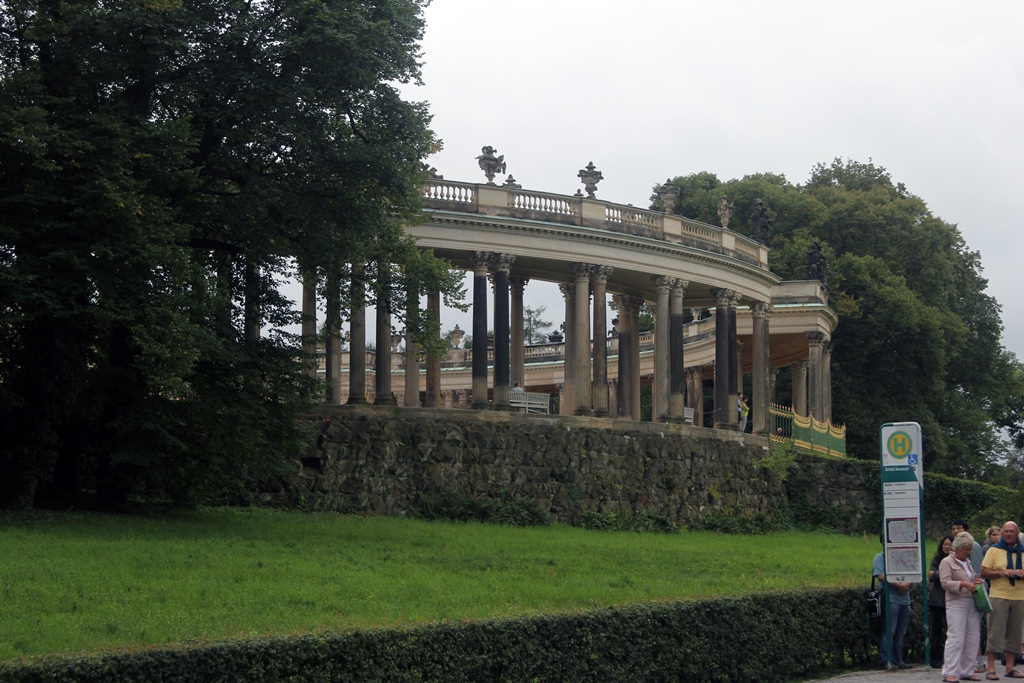
Get Off Here
Make your way toward the colonnade. You’ll go past it on the street below, and then enter the
grounds and come back to it. Eventually you’ll have the palace on your right, and the colonnade
on your left, with an open "court of honor" area in between.
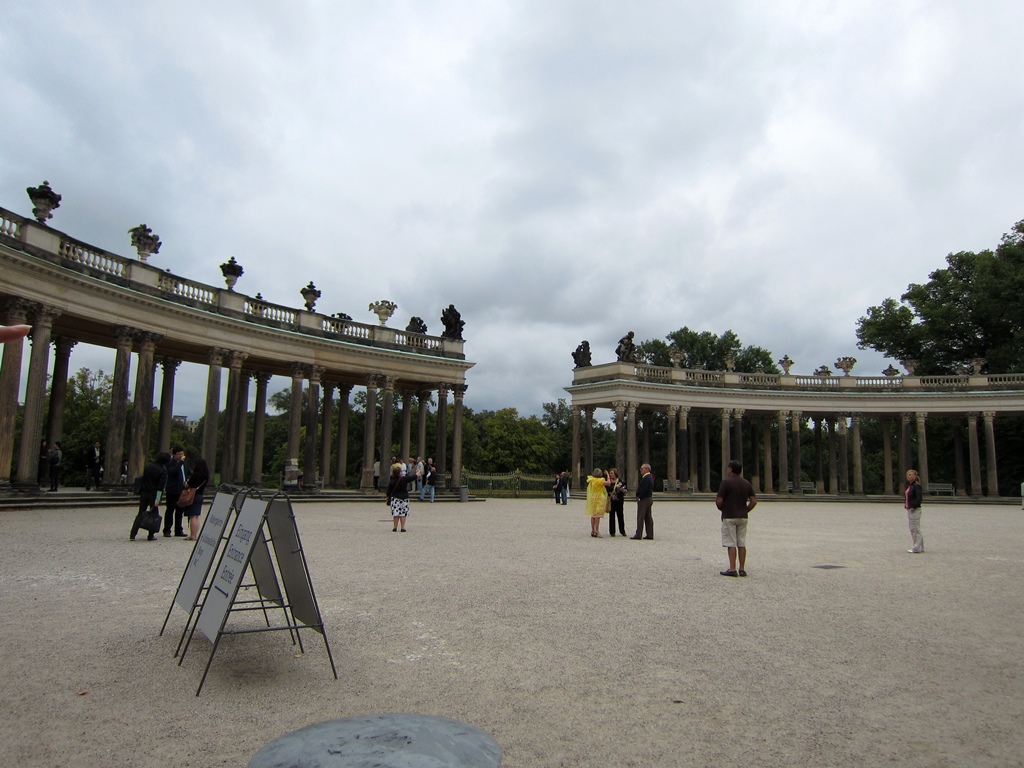
Court of Honor with Colonnade
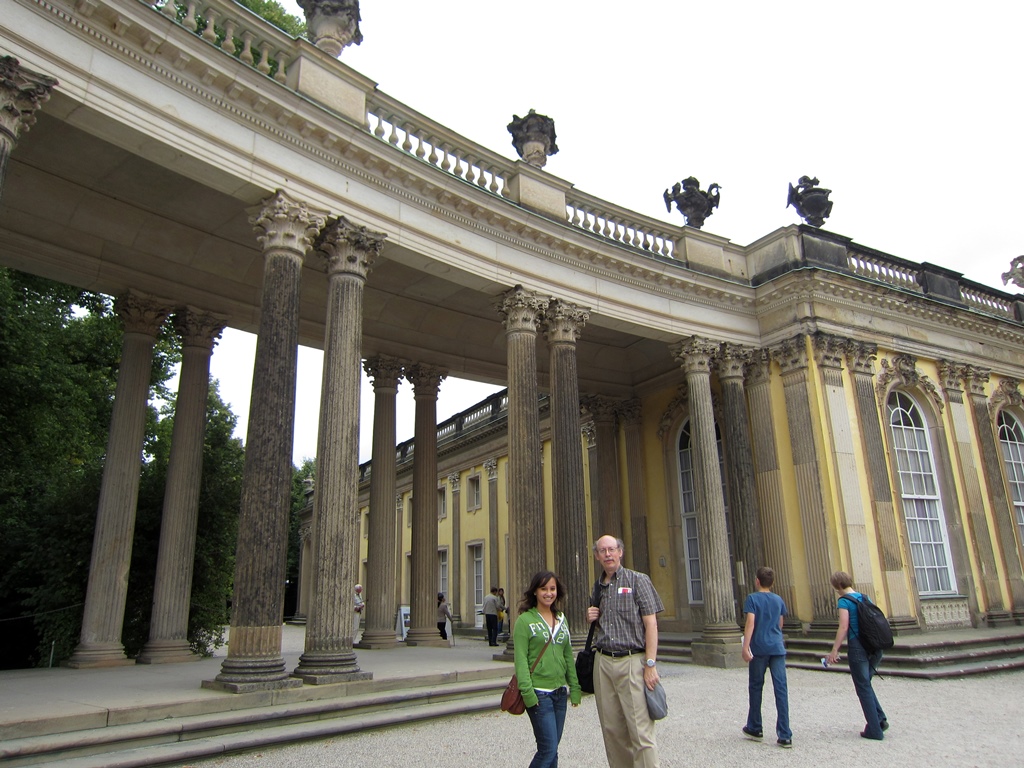
Connie and Bob with Colonnade
Colonnade Detail
On your right there will be a ticket office, where you have a choice of packages, with
an optional surcharge for permission to take photographs (this comes with a wristband). We
chose a package that included Sanssouci and the Neues Palais (more on this later). Then
you get in line and wait to be admitted. We happened to choose a day when a cloudburst
looked continually imminent, so the crowd was probably somewhat reduced.
Nella Waiting in Line
The palace is laid out with a central domed room, with east and west wings of rooms. The
east wing has rooms that were reserved for the use of the king, and the rooms in the west
wing were used by guests. As you can see from the layout, there weren’t all that many
rooms, for a palace.
Palace Layout
The tour route headed first for the east wing. We passed through a vestibule, a hallway
called the “small gallery”, and a library. Frederick’s ideas for the palace included
specific ones about the interior decorations, with a style so distinctive it has acquired
a name of its own – Frederician Rococo. There is also quite a bit of artwork in evidence,
and Frederick was quite an aficionado of French painting, particularly by the artist
Antoine Watteau.
Columns and Ceiling, Vestibule
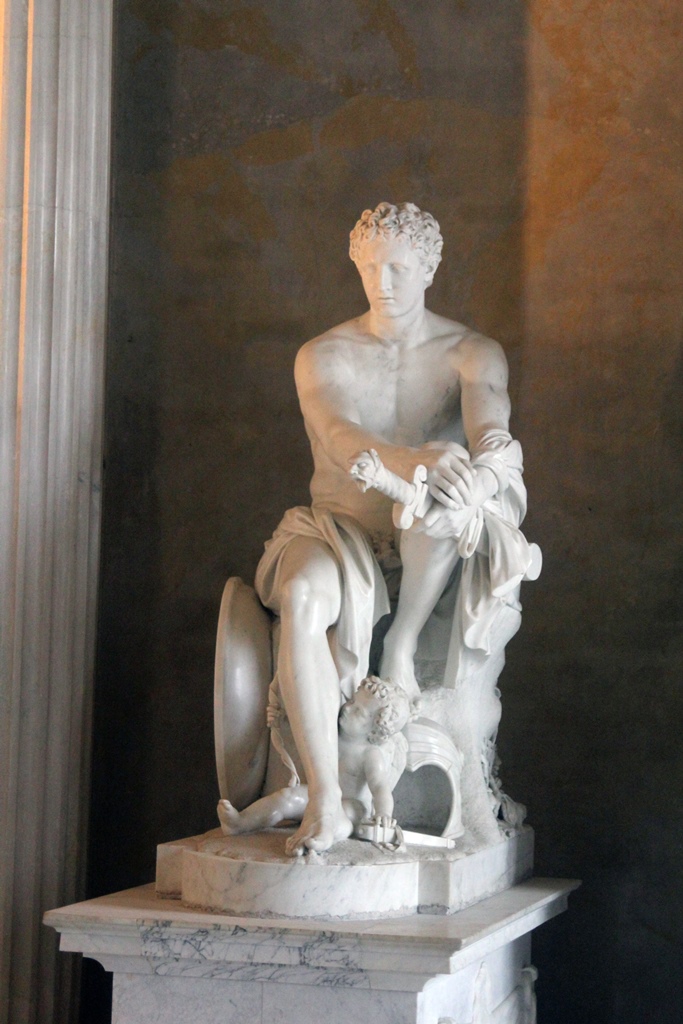
Vestibule Statue
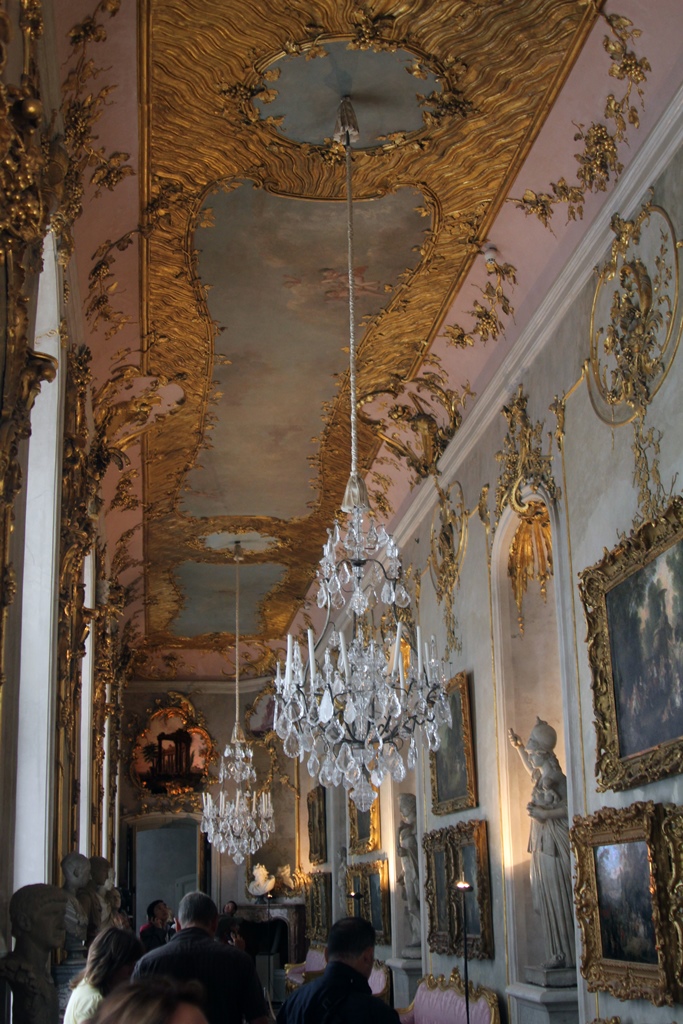
The Small Gallery
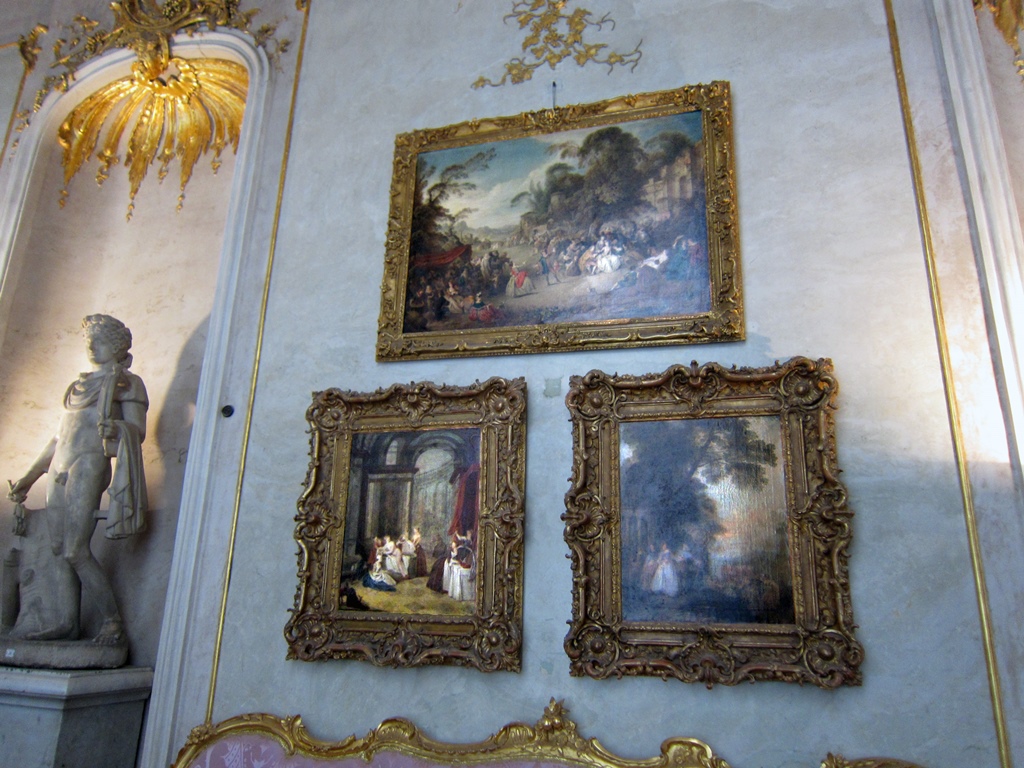
Paintings, Small Gallery
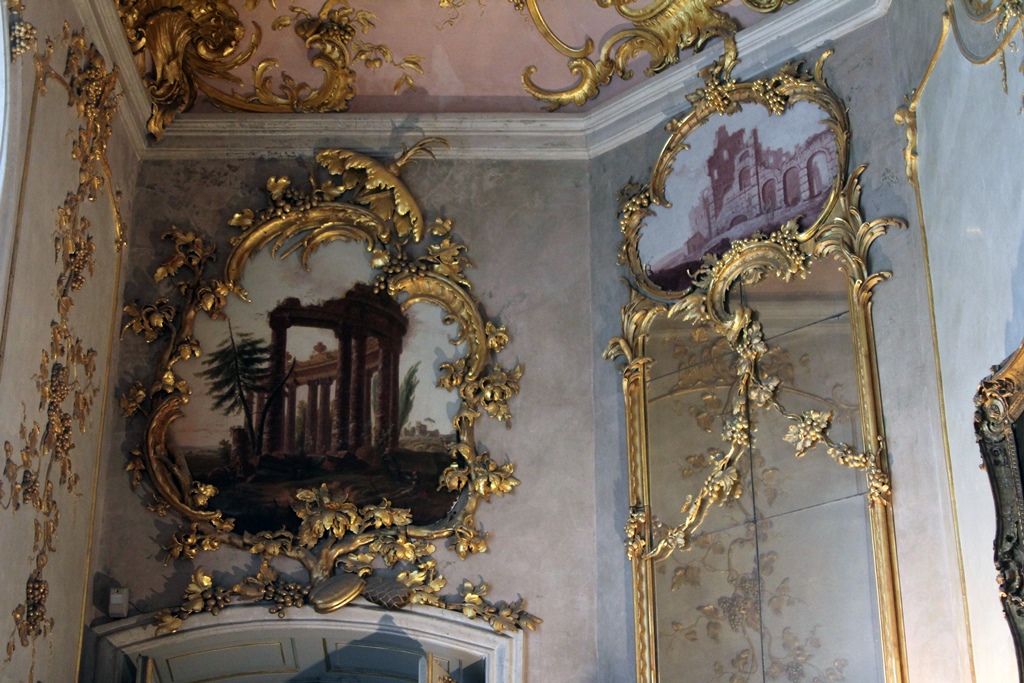
Painting, Mirror and Decorations, Small Gallery
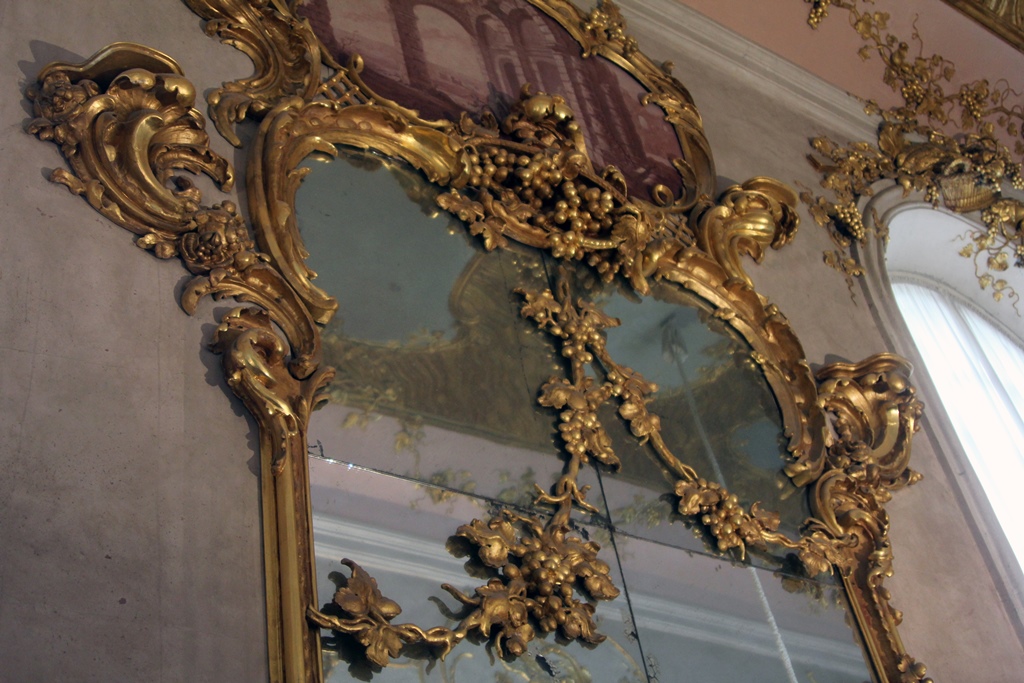
Mirror Detail, Small Gallery
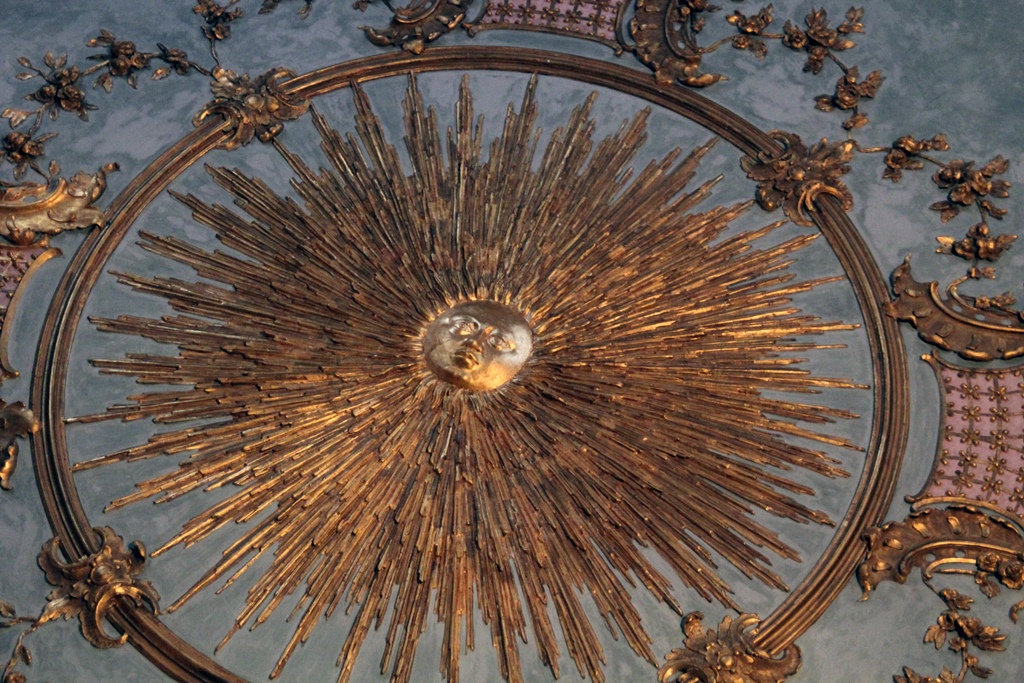
Ceiling, Library
The King was also very interested in music, having composed several flute sonatas,
as well as a few symphonies. His rooms in the palace include a music room, which houses
a pianoforte. The King was quite accomplished at playing the flute, and his flute is on
display.
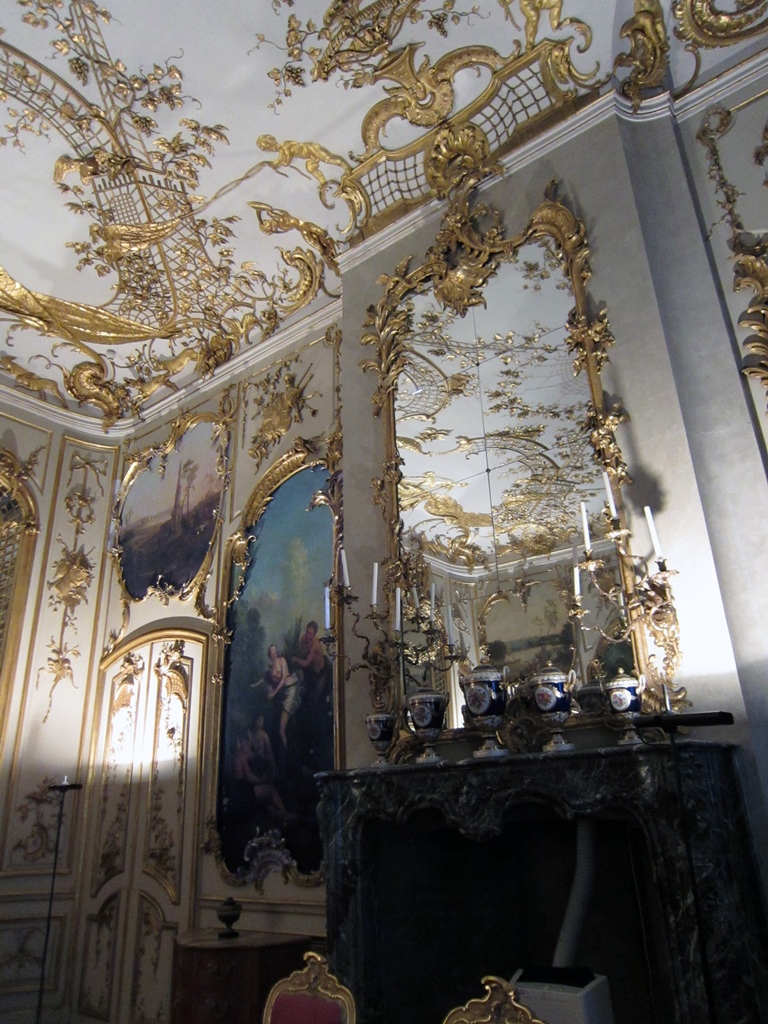
The Music Room
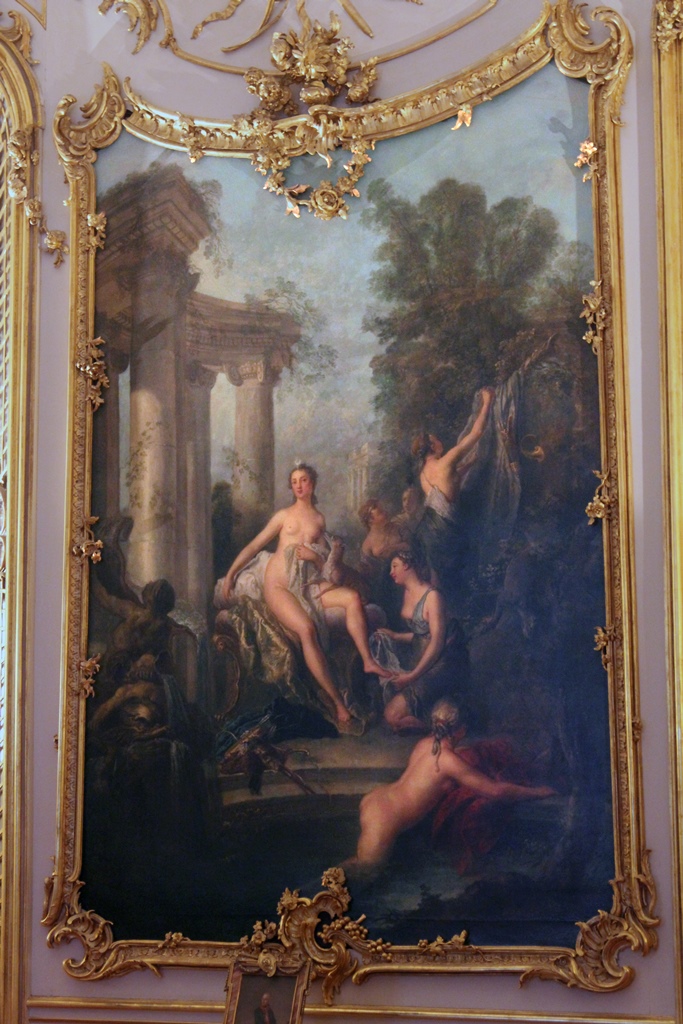
Painting, Music Room
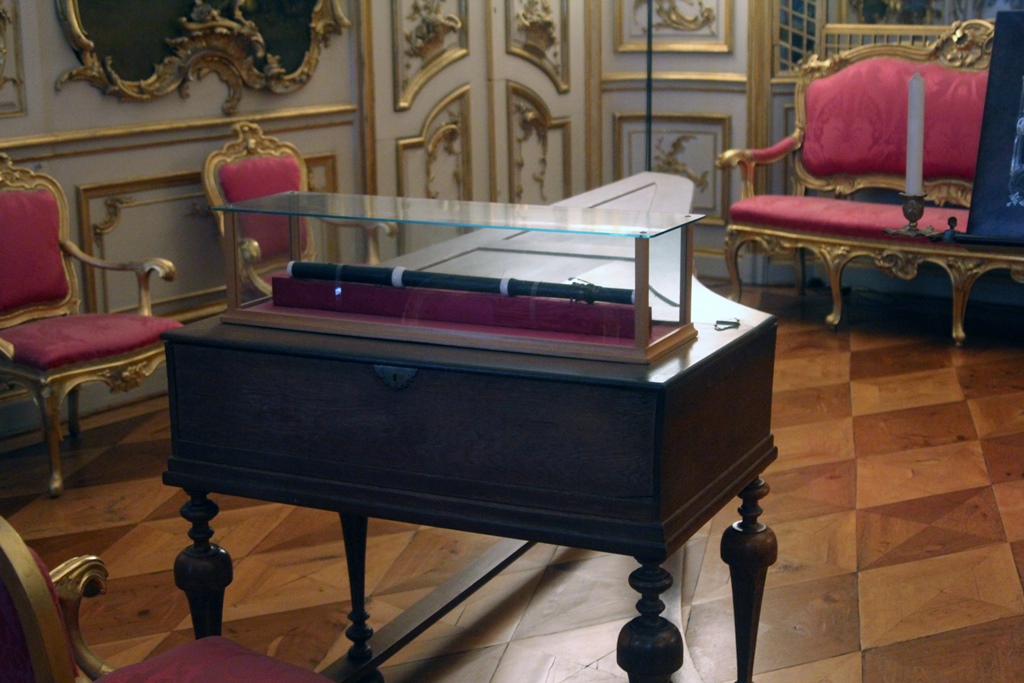
Flute and Pianoforte
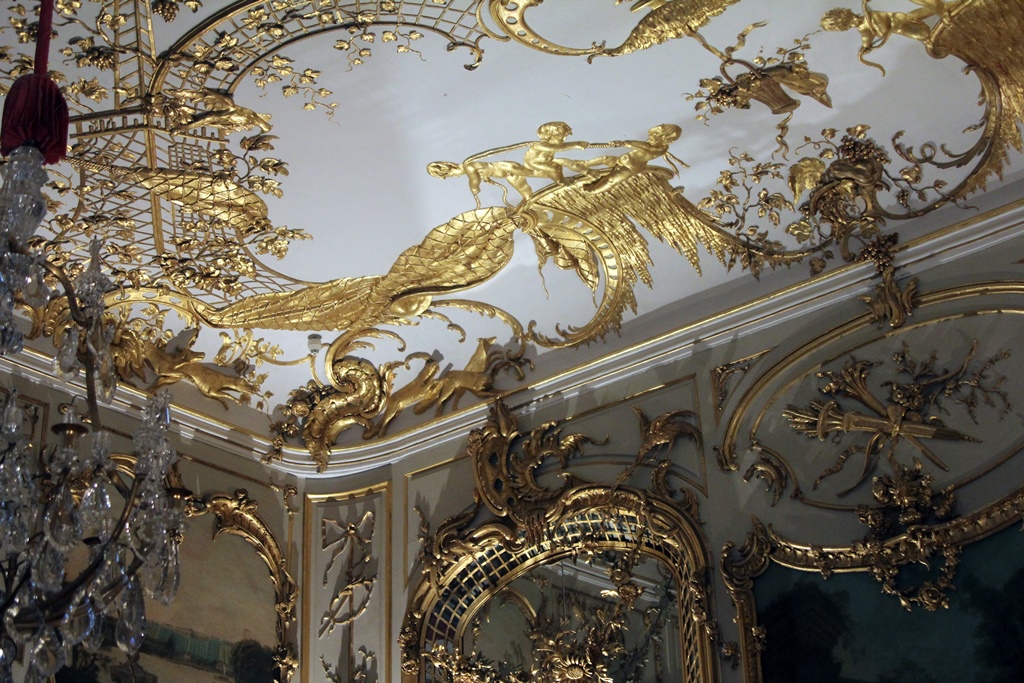
Music Room Decorating
Past the music room is the central domed room, known as the Marble Hall. The room is
surrounded by Corinthian columns, and around the base of the dome there are sculptural
groupings representing astronomy, music and the visual arts.
The Marble Hall
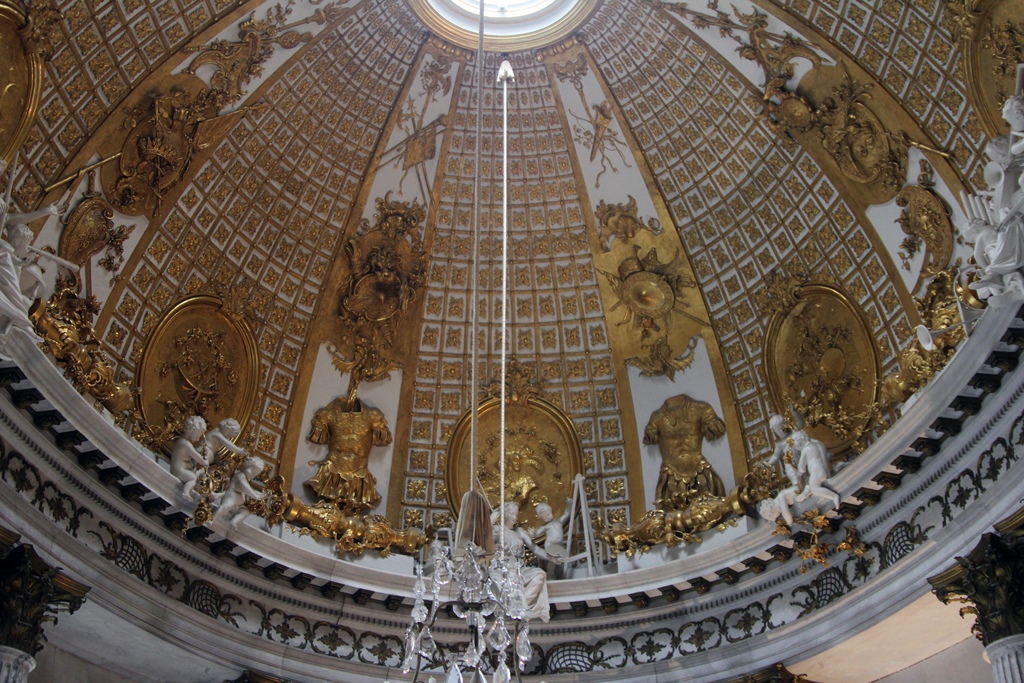
The Dome
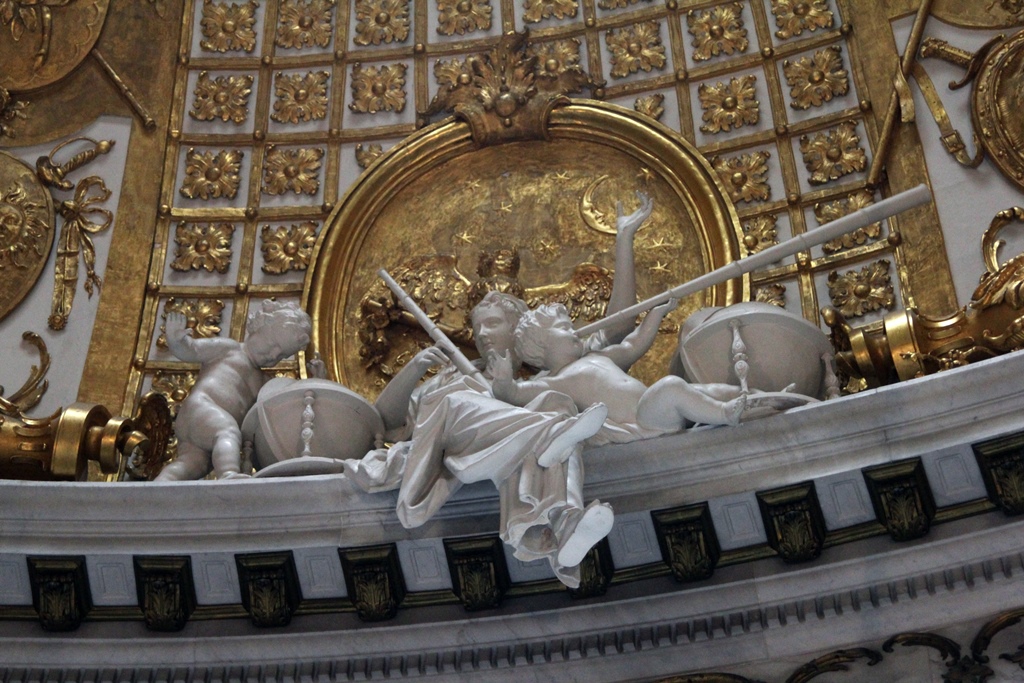
Astronomy Grouping
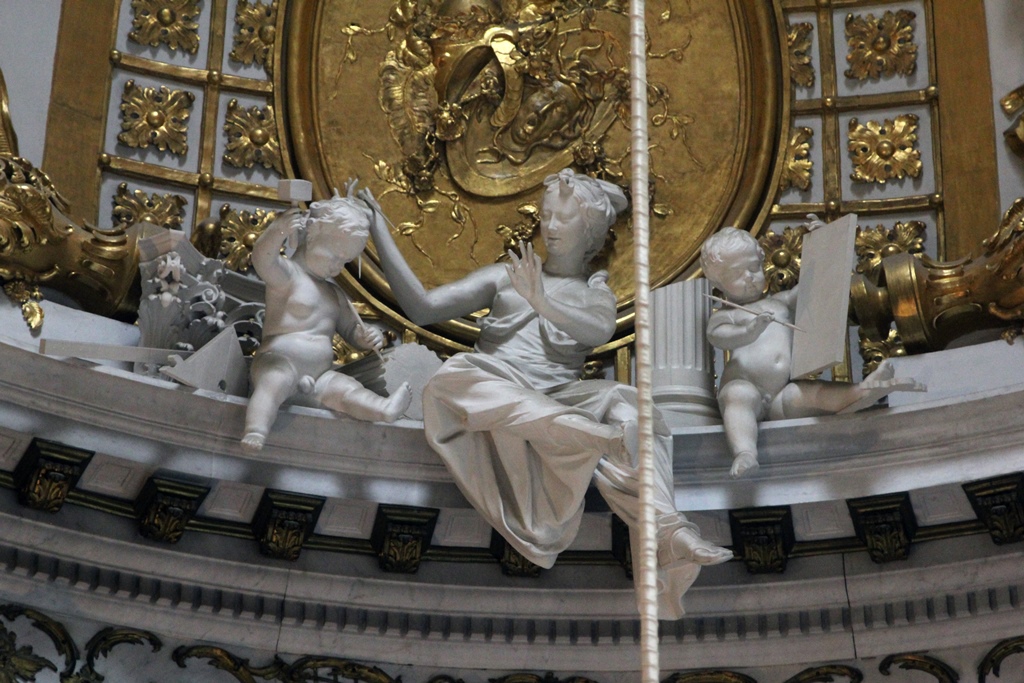
Visual Arts Grouping
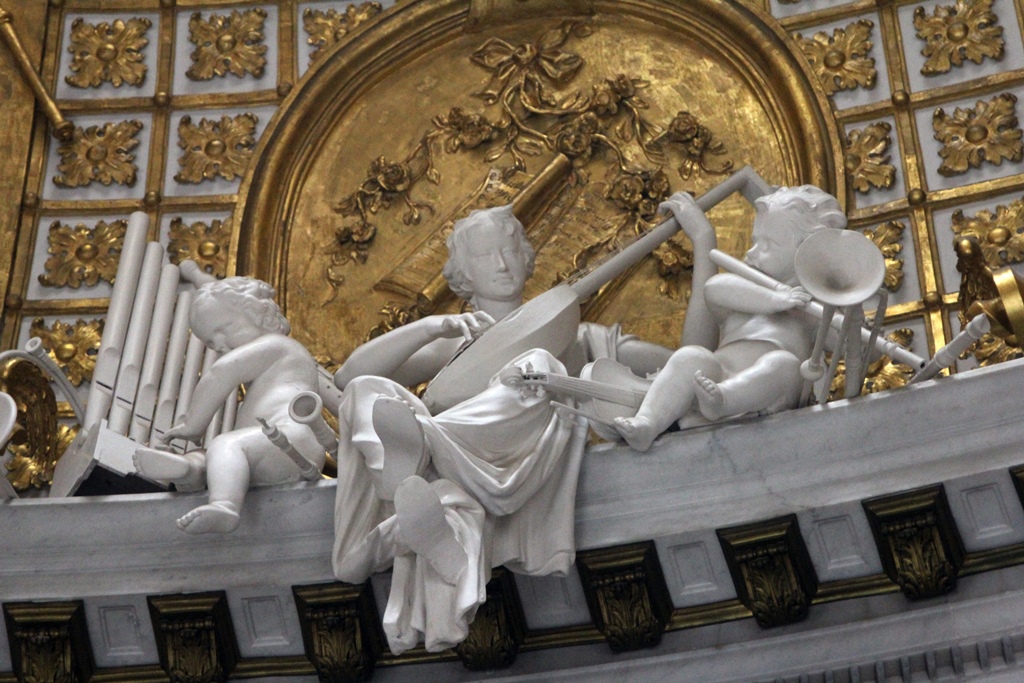
Music Grouping
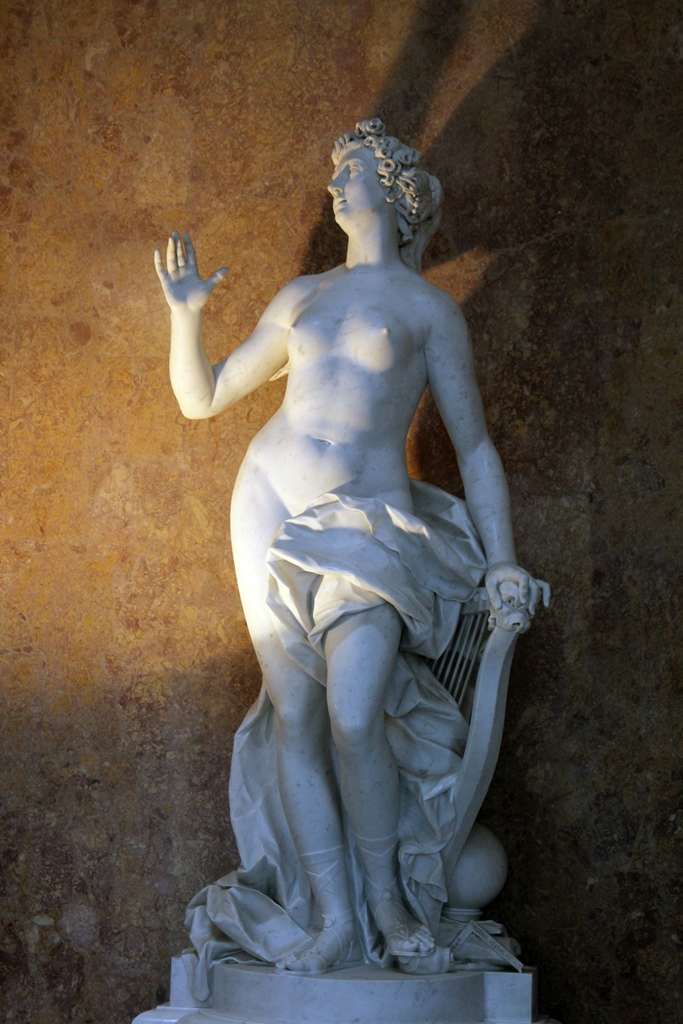
Woman with a Harp
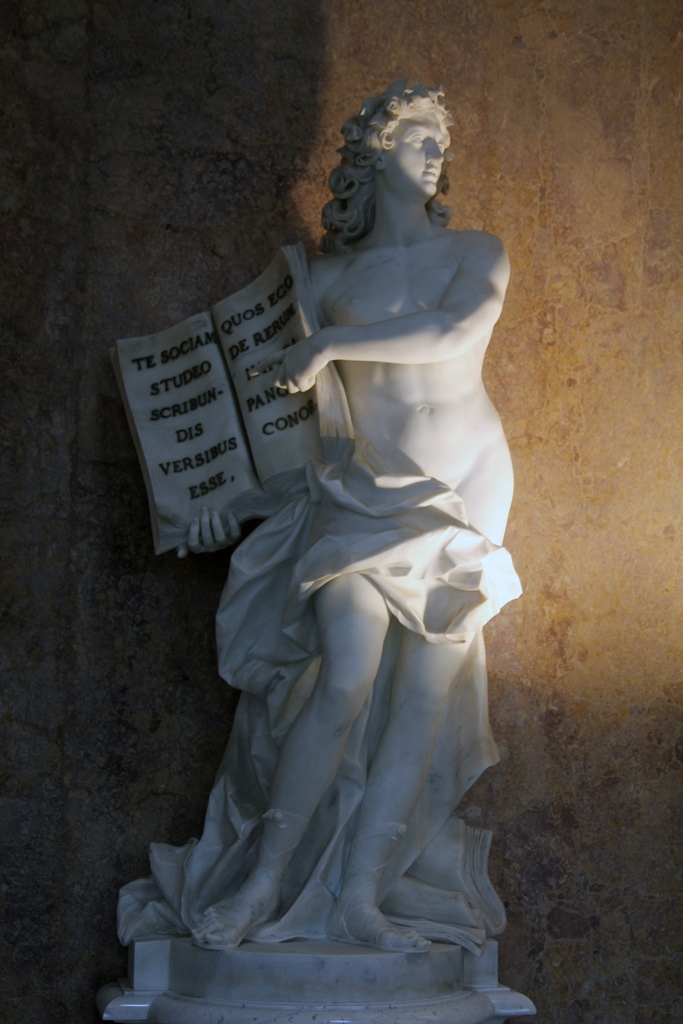
Man with a Book
The guest rooms were nicely decorated, but one room in particular stands out. This
room is known as the "Voltaire Room", named for the French writer and philosopher. For
years Frederick had corresponded with Voltaire, and in 1750 Voltaire himself appeared
in Potsdam, staying as a houseguest in this room until 1753. In 1752 the King drew a
number of sketches that were turned into the elaborate carved-wood decorations that
decorate the walls and ceiling. As it turned out, Frederick and Voltaire got along a
lot better as correspondents than as cohabitors, and they did not part on good
terms. They reconciled in later years, however.
Paintings, One of the Other Guest Rooms
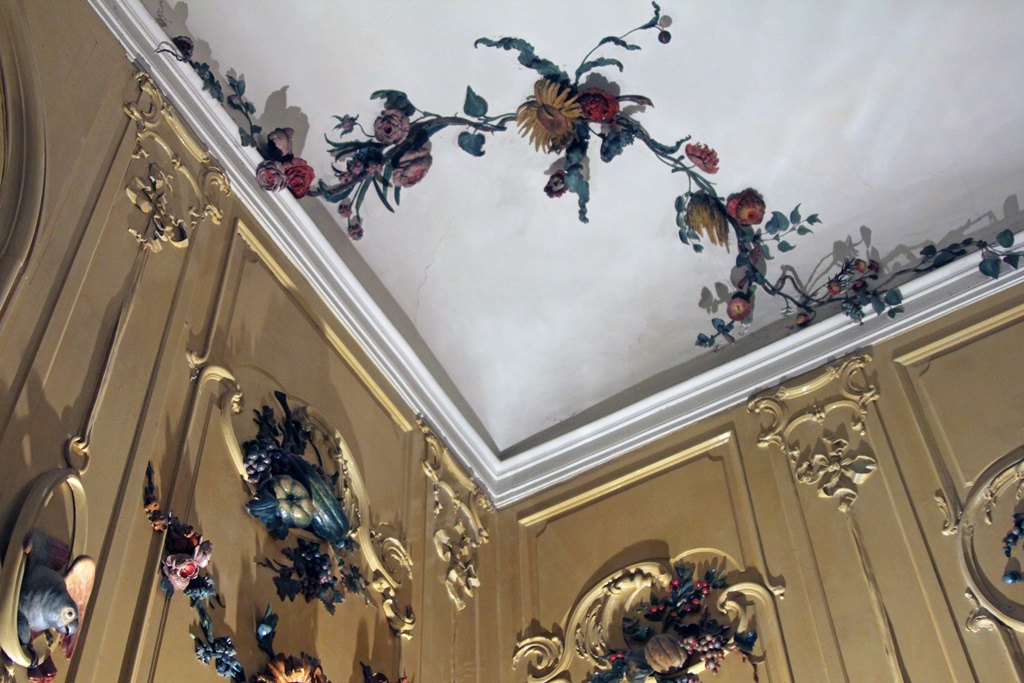
Decorations, Voltaire Room
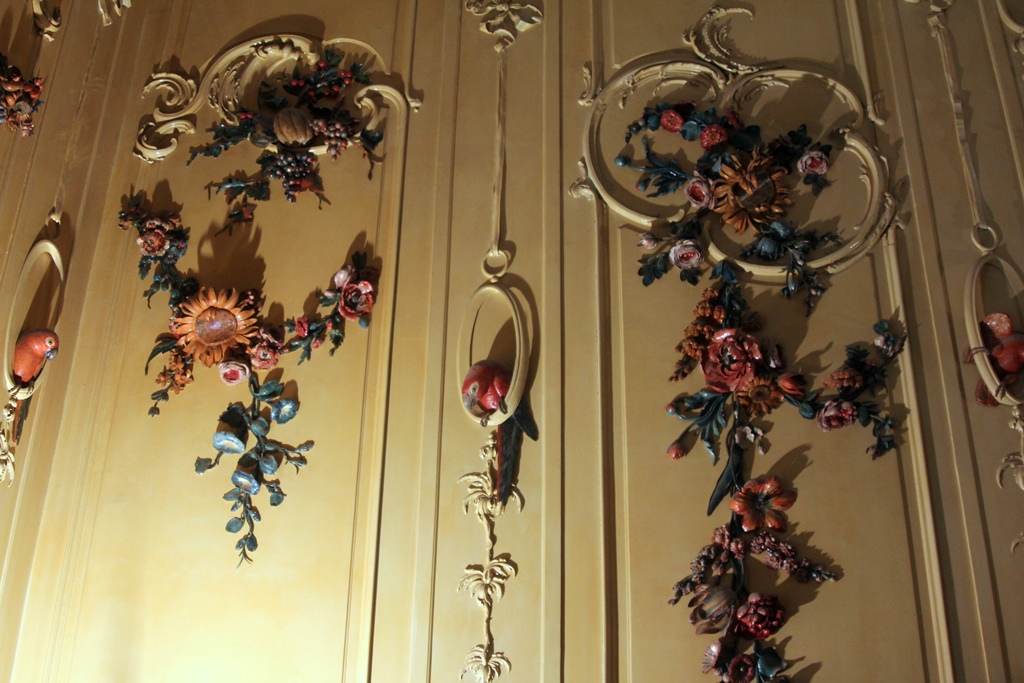
More Decorations
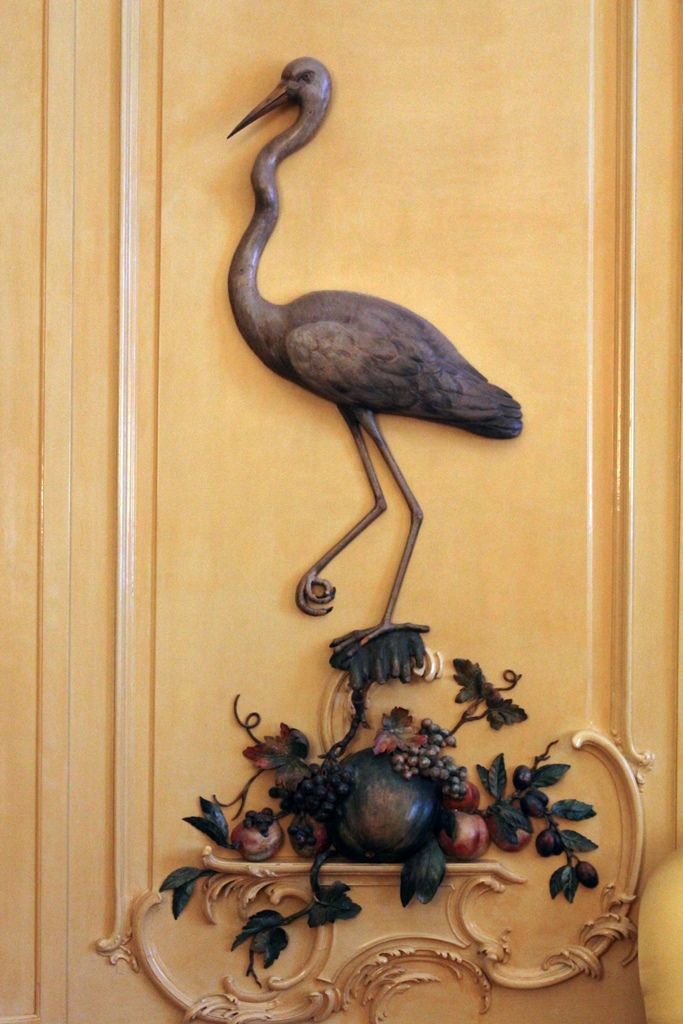
A Waterfowl
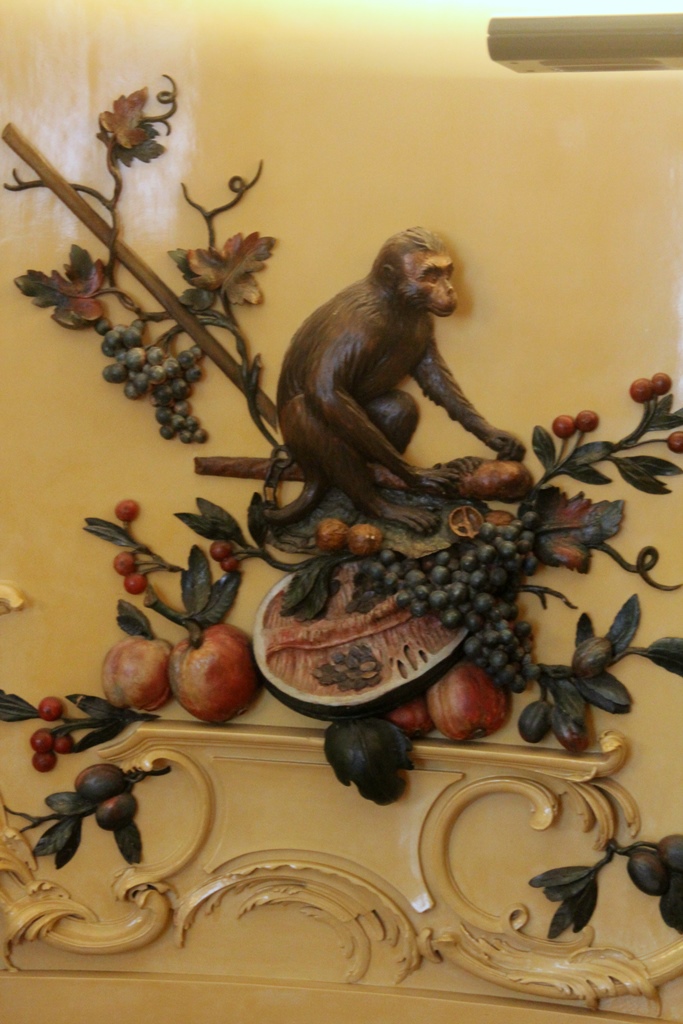
A Monkey
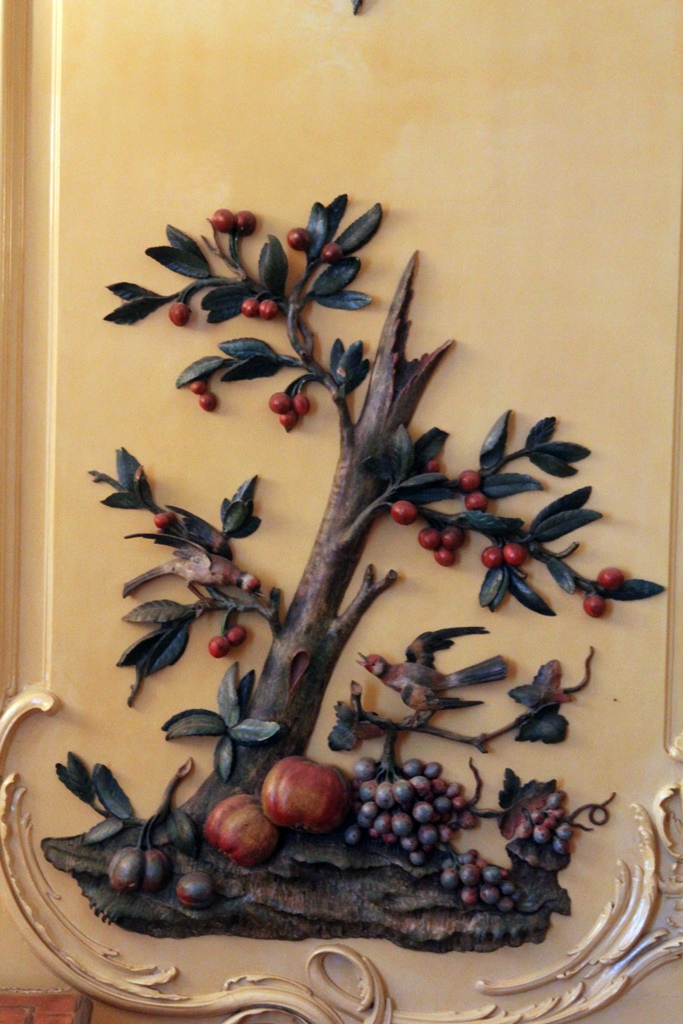
Tree with Birds and Fruit
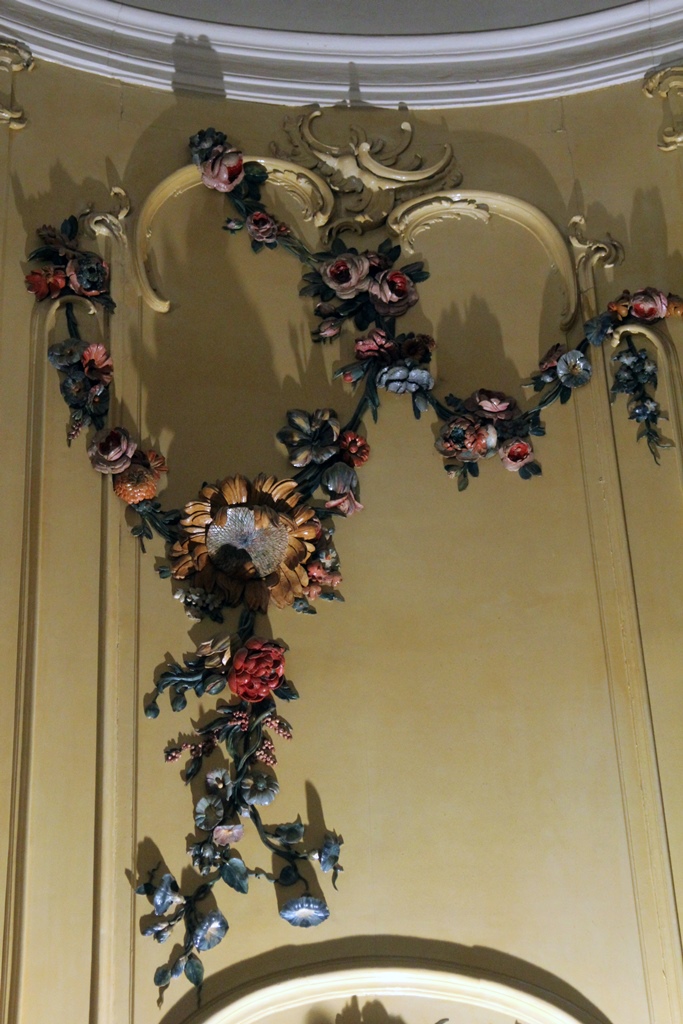
Flowers
This concluded our tour of the main palace, and we were expelled back out into the
threatening weather. Our admission included entry to some other structures in the
complex, but first we took some time to look around outside, as there was no guarantee
that the weather would allow for much of this later. We made our way around the east
end of the palace to see what the south side looked like. On the way we noticed a
nicely decorated gazebo with a statue of a boy inside it.
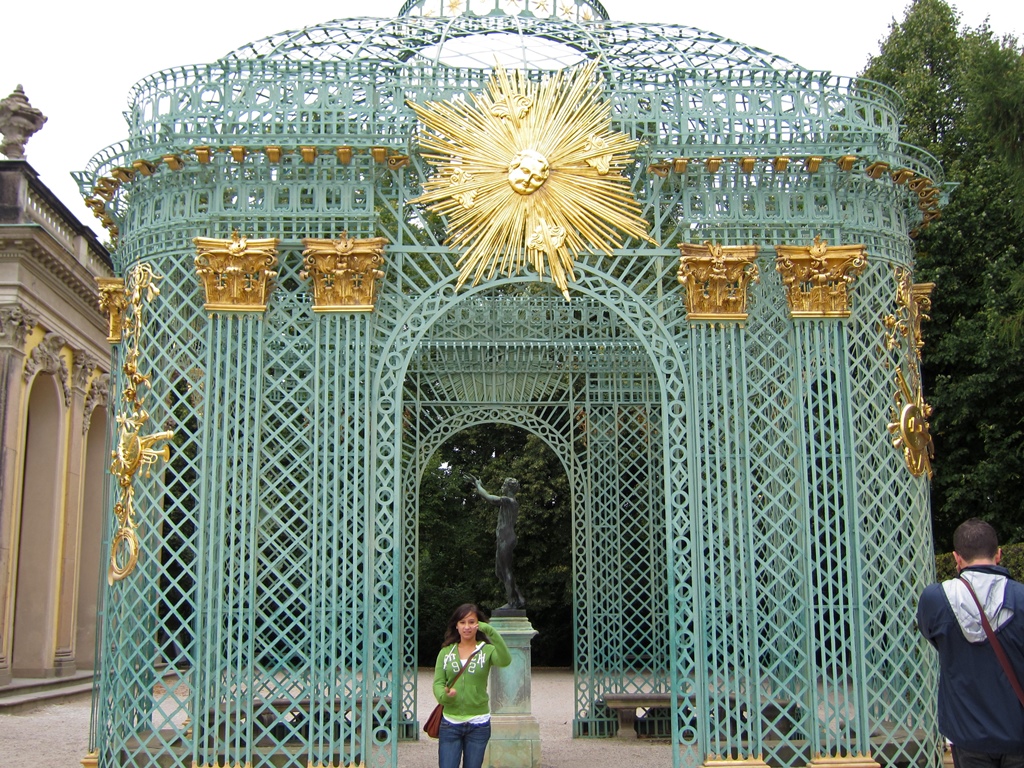
Connie and Gazebo
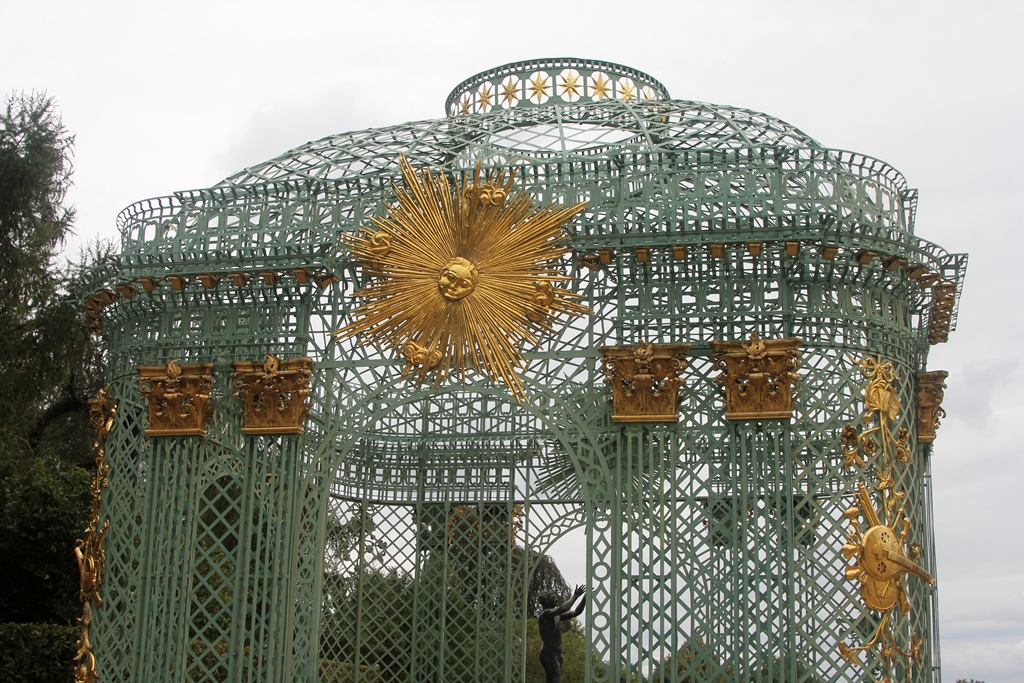
Gazebo Details
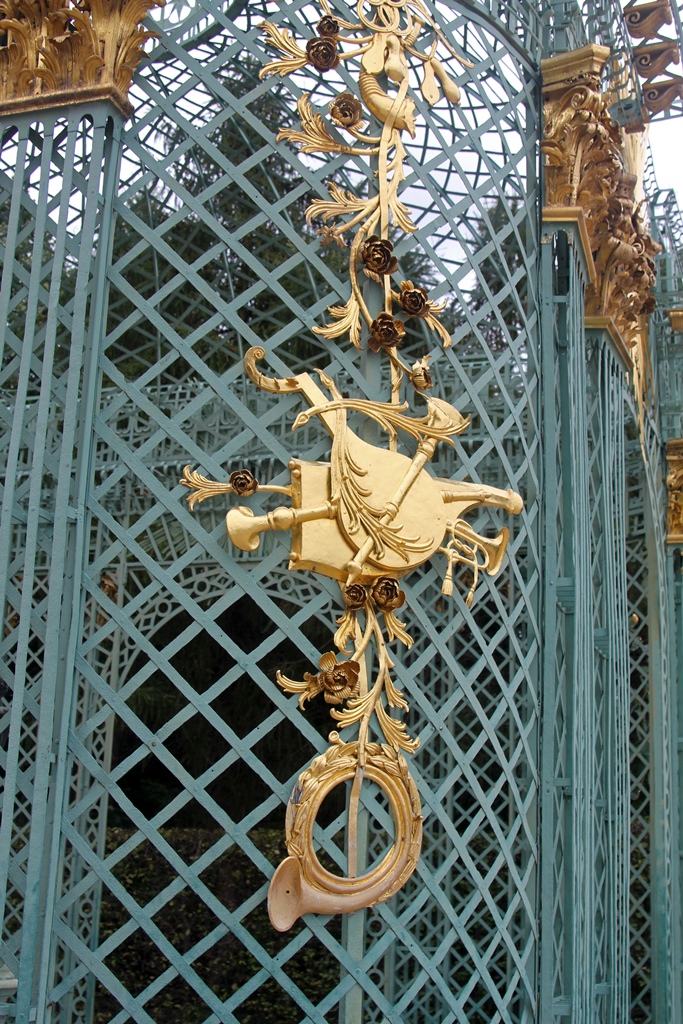
Gazebo Details

Nella and Connie and South Side of Palace
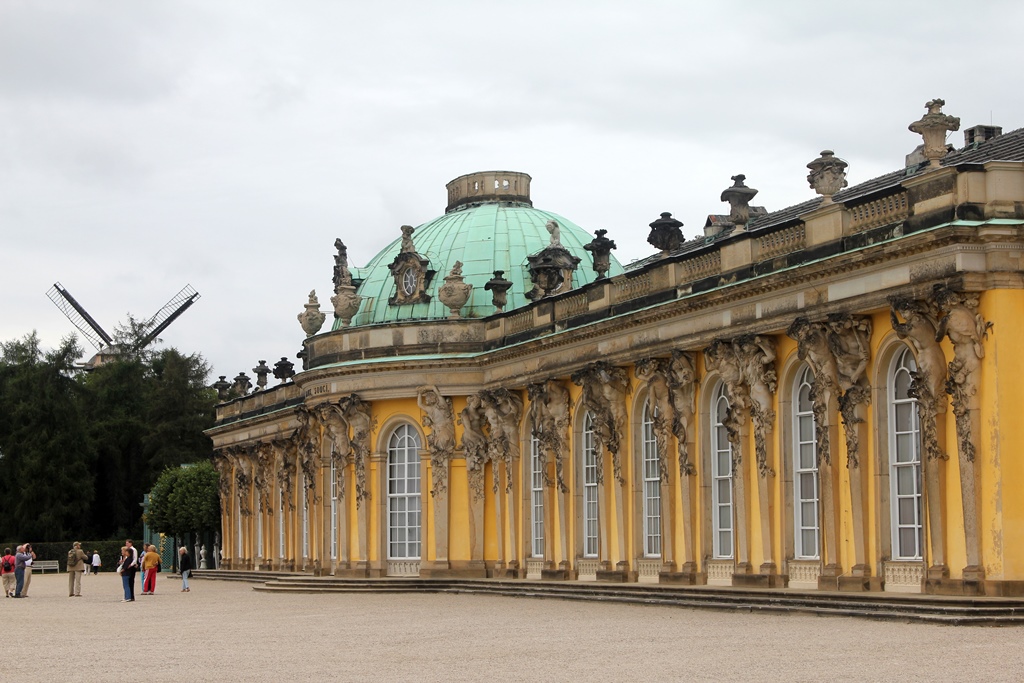
South Side of Palace
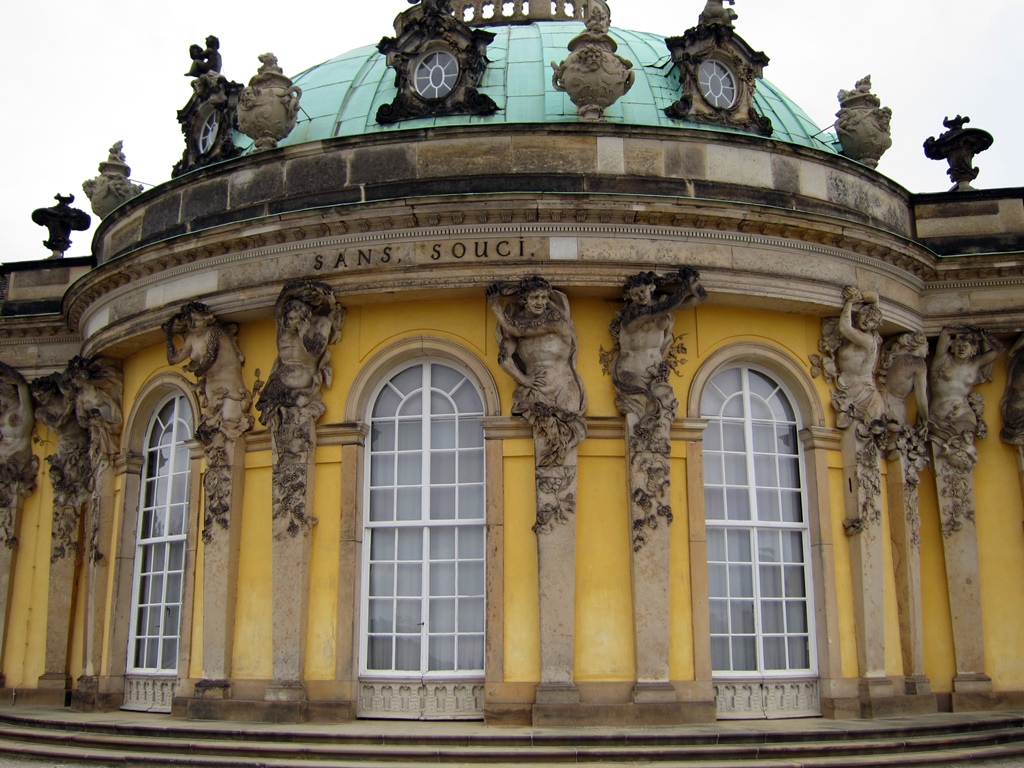
Palace Details
Sanssouci was built at the top of a hill, and Frederick had terraced vineyards installed
along its southern slope. This area is now a nicely landscaped park, with a fountain at
the bottom.
Sanssouci Gardens
Frederick was so attached to the view from the palace that he chose the area to be
his burial place. But things didn’t quite work out this way. After Frederick’s
death (in the palace study), his nephew and successor, Frederick William II, instead
had him entombed next to his father in the Potsdam Garrison Church. He remained
there until near the end of World War II, when Hitler had him moved to a salt mine
for his protection. After the war, the Allies moved him to Hohenzollern Castle, near
Stuttgart. After reunification, Frederick returned to Potsdam, and in 1991, after a
day in state in the Sanssouci court of honor, he was buried in a simple grave near
the gazebo, overlooking the park. People visit the grave and leave potatoes. This
is because Frederick introduced potatoes to Germany and promoted their consumption to
such an extent that they became a staple of the German diet. There was a single
potato on the grave during our visit, but there are usually a lot more.
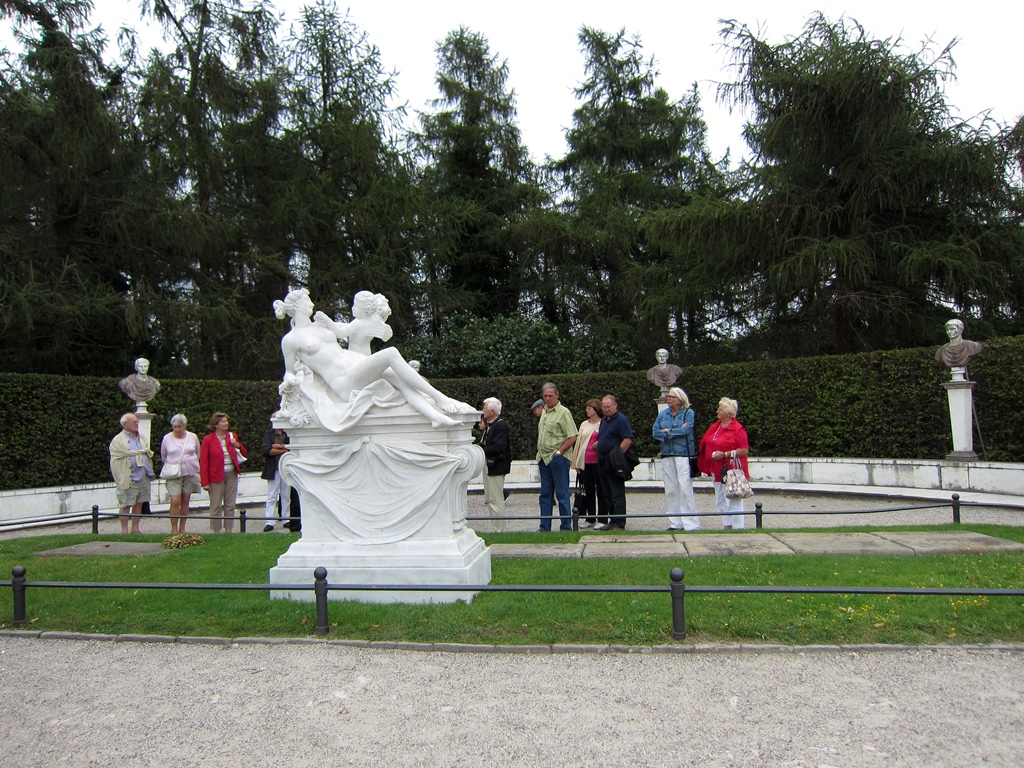
Burial Place of Frederick II
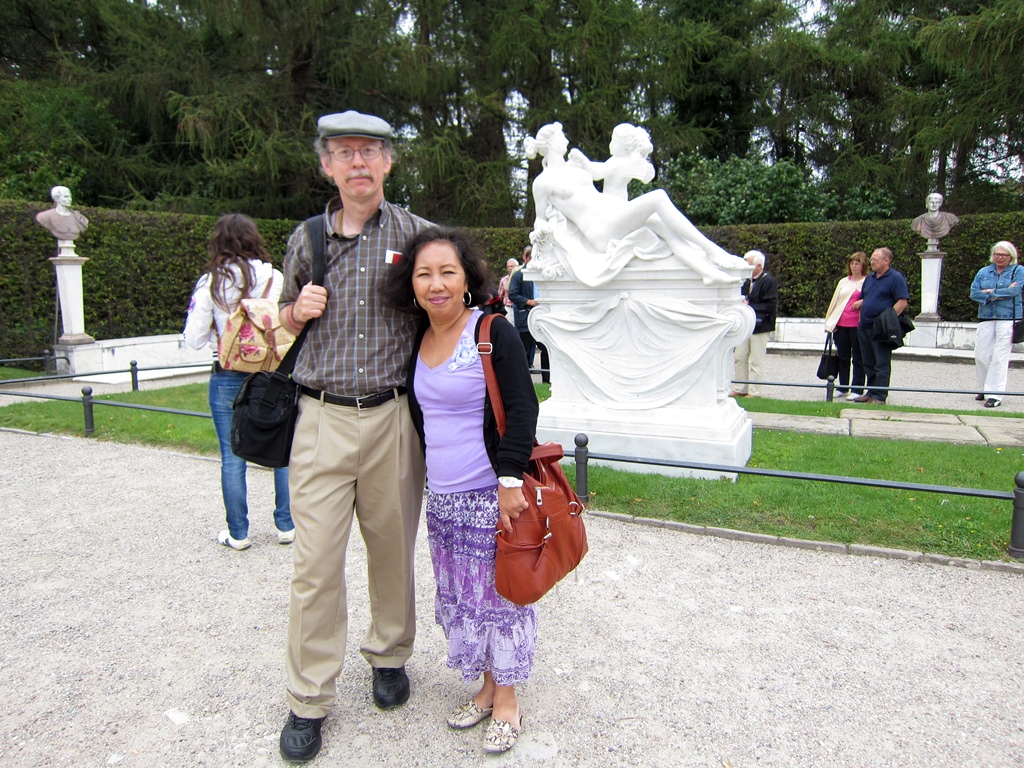
Bob and Nella and Statue
Grave of Friedrich der Grosse
East of the palace is the Sanssouci Picture Gallery, built by Frederick in place of
a former greenhouse for display of his extensive art collection. Much of his
collection went to various other places over the years (especially after World War
II, when many works ended up in the Soviet Union), but many paintings have
returned. The paintings are labelled with numbers, and without a key it’s difficult
to identify them, but many are recognizable as works of Peter Paul Rubens. There
are also works by Caravaggio and Anthony van Dyck.
East Wing, Picture Gallery
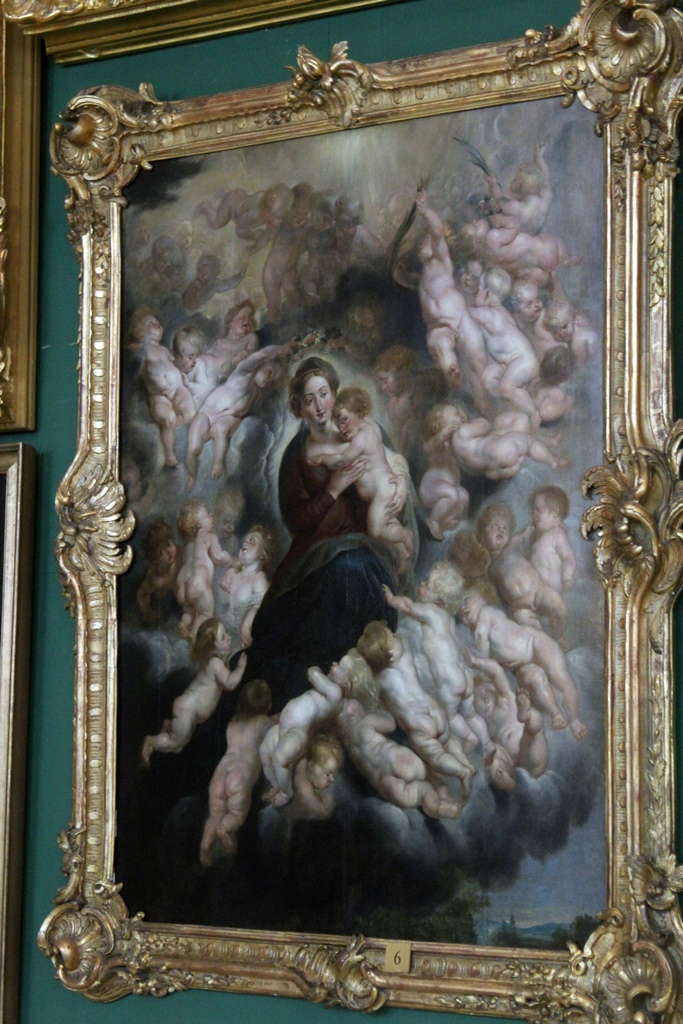
Rubens Painting
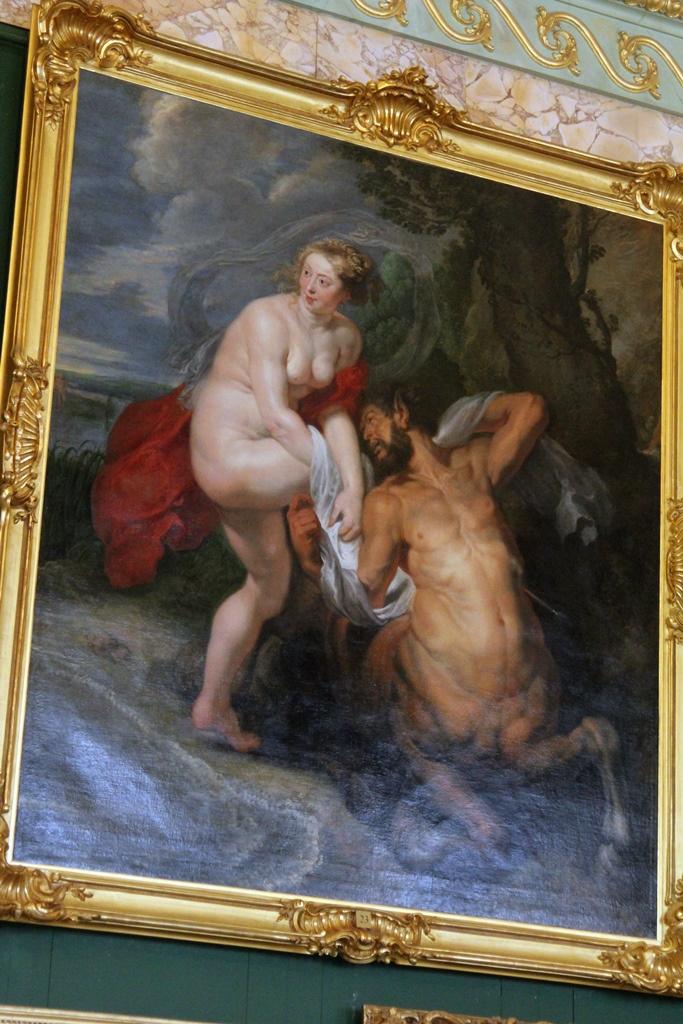
Another Rubens Painting
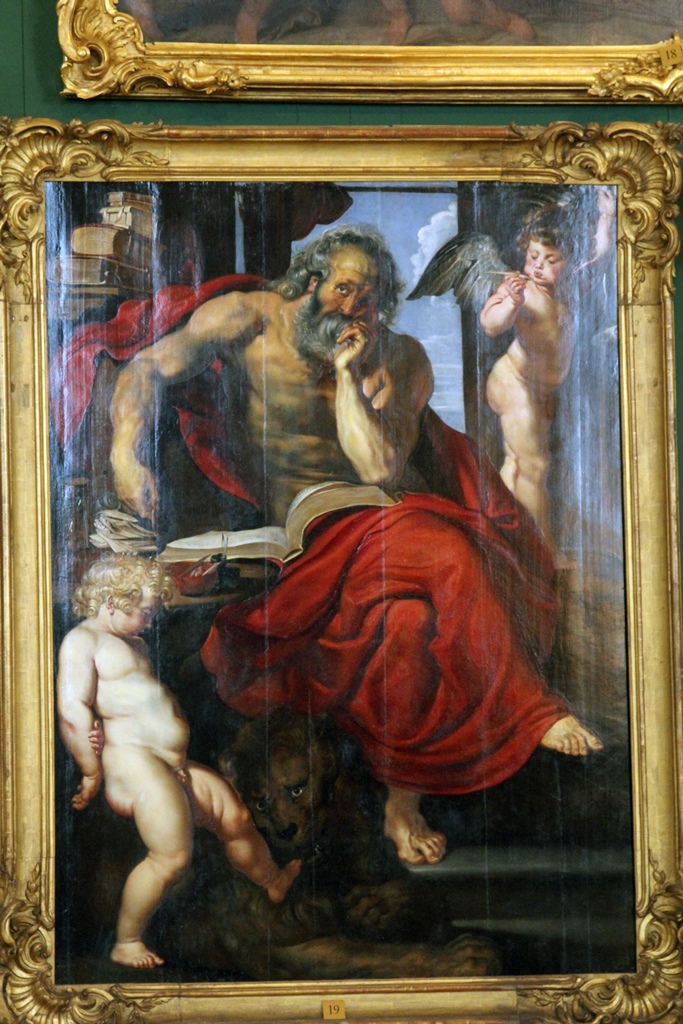
St. Jerome, Peter Paul Rubens (1608-09)
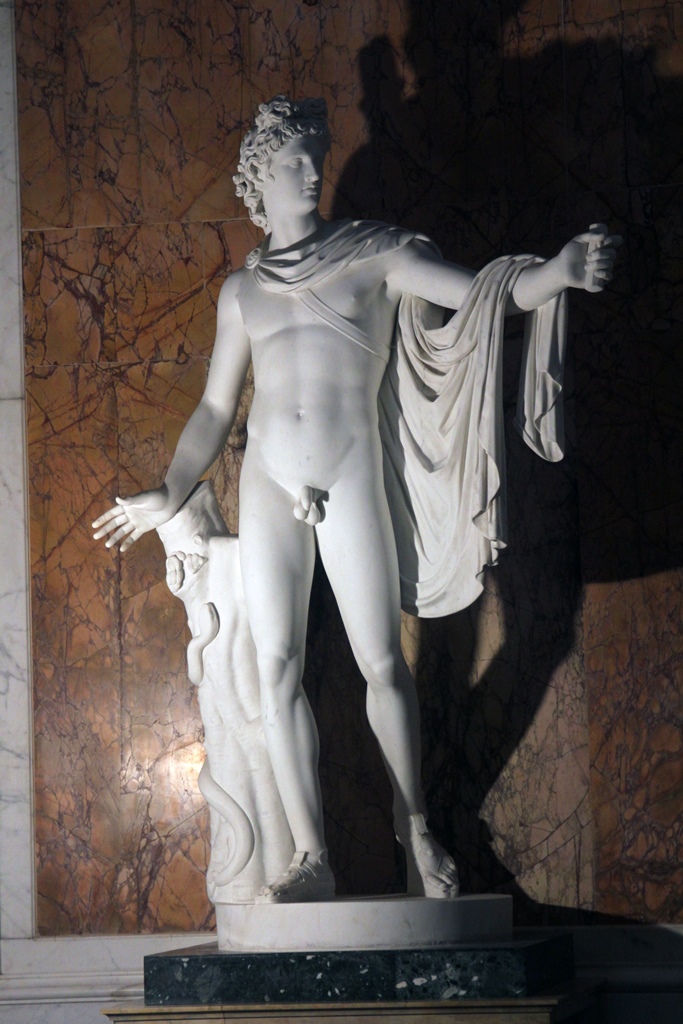
Statue of Apollo?
Located to the east of the main palace is a secondary wing which was small and
utilitarian during Frederick’s time, but which was enlarged by Frederick William
IV to include an extensive kitchen during the 19th Century. This wing also
includes a wine cellar.
Tables in Kitchen
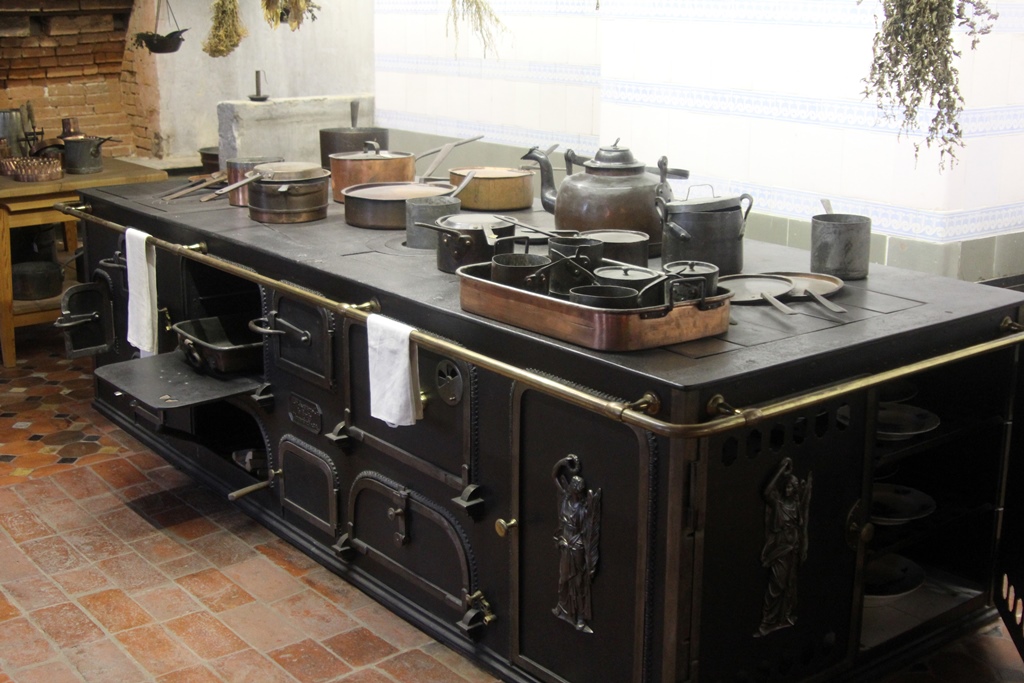
Stove
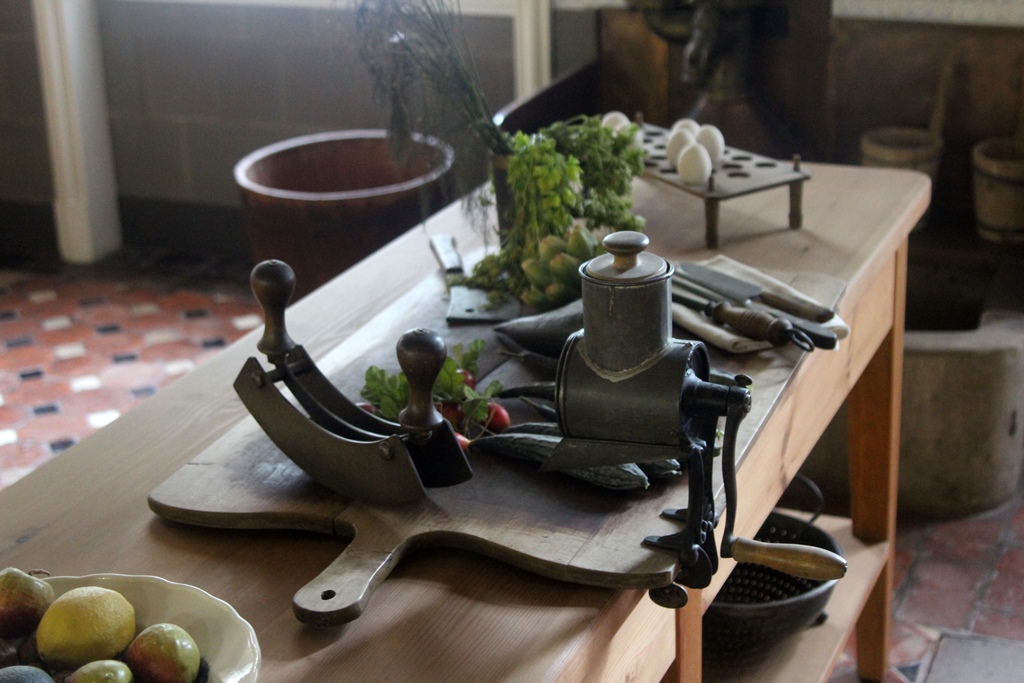
Grinder
A matching secondary wing to the west was enlarged to hold rooms for
ladies-in-waiting and guests. This wing is now called the Ladies’ Wing.
Chair and Paintings, Ladies' Wing
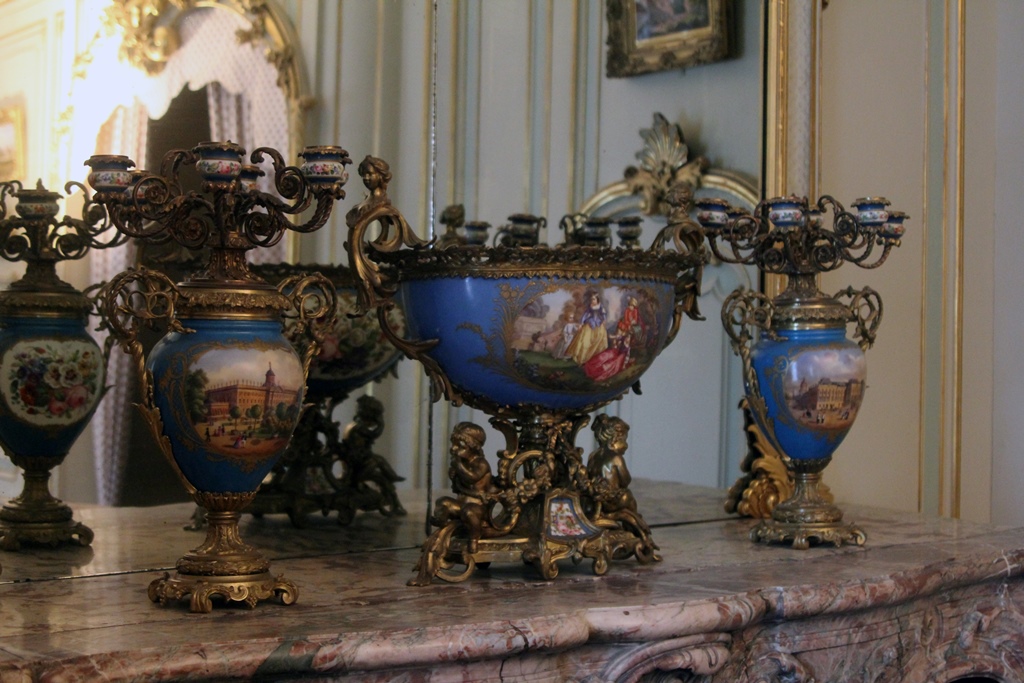
Mantelpiece Decorations
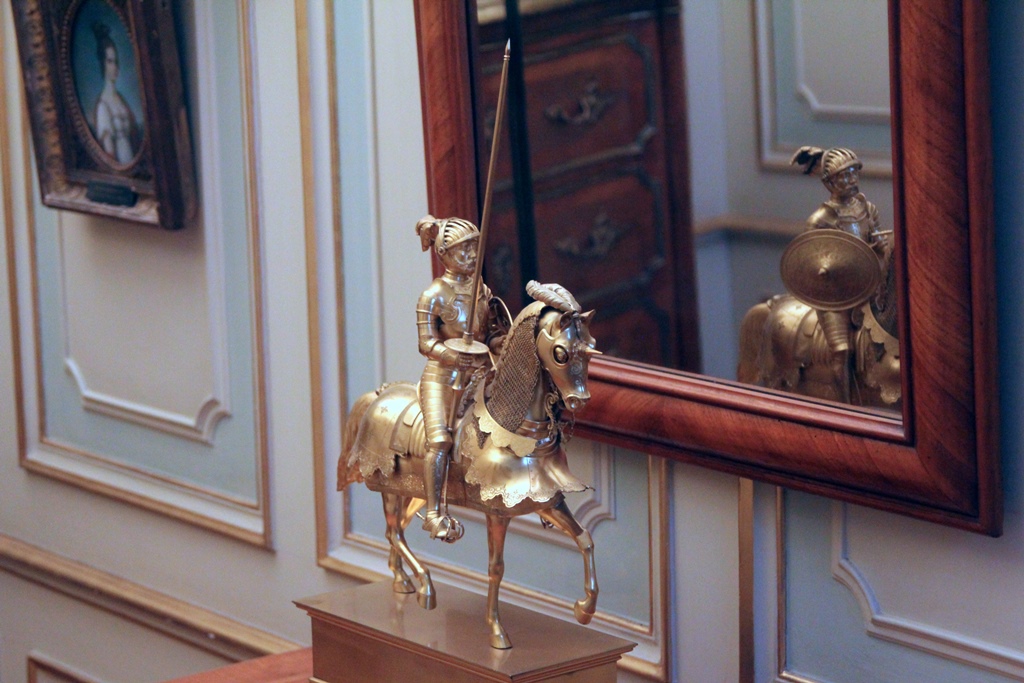
Small Knight on Horseback
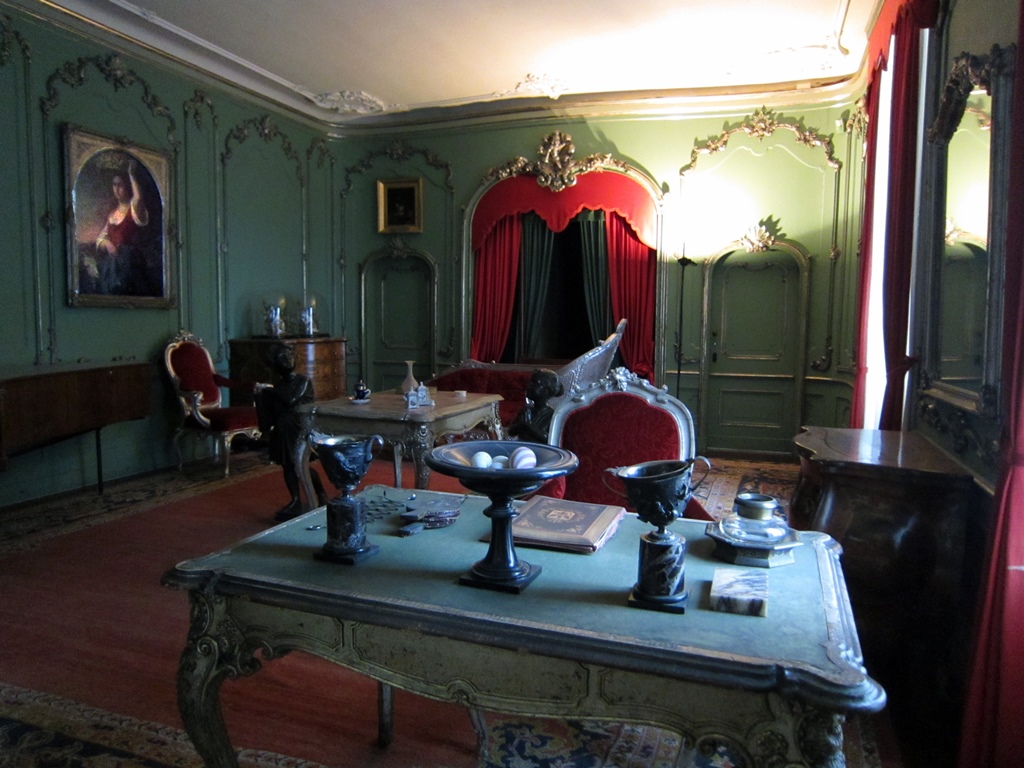
Study
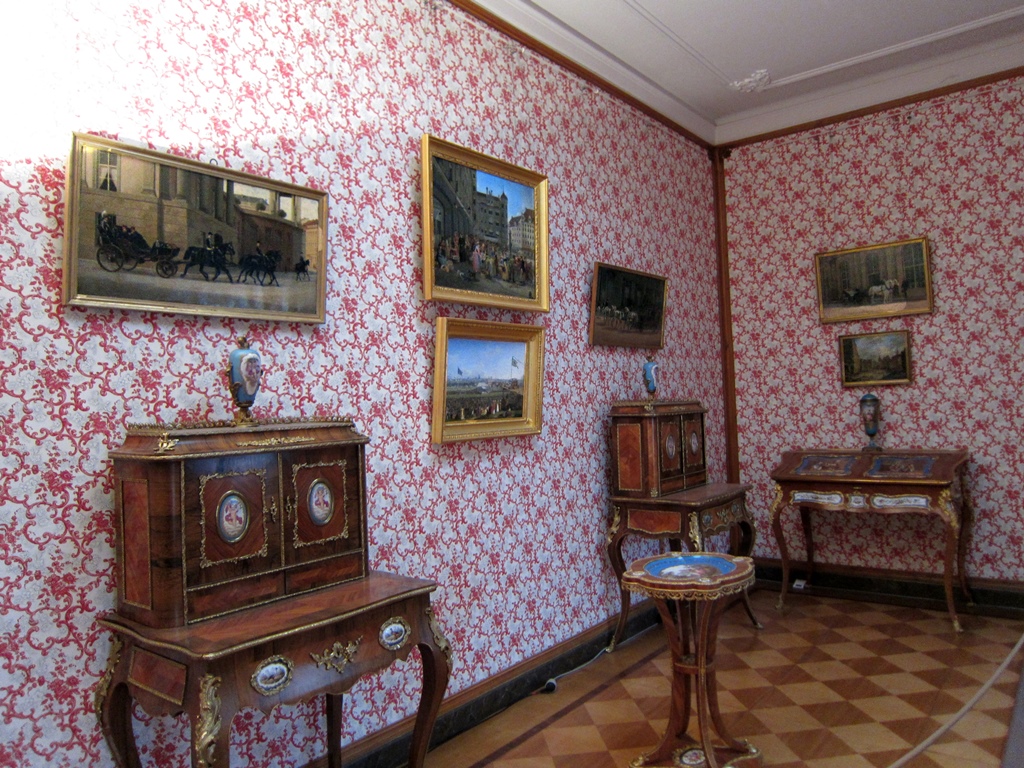
Furniture
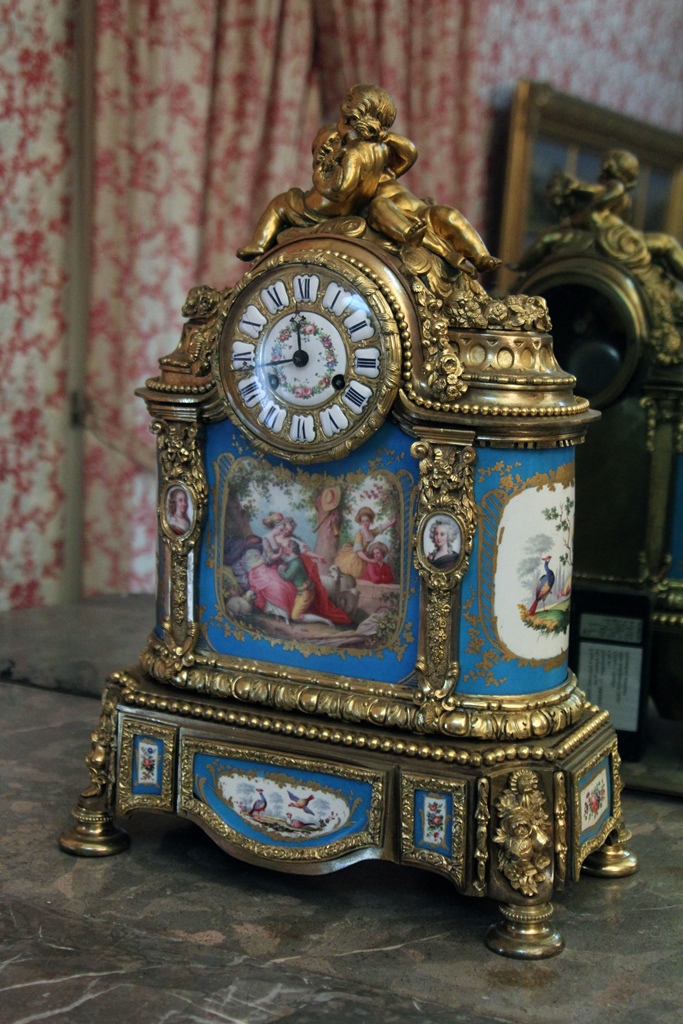
Clock
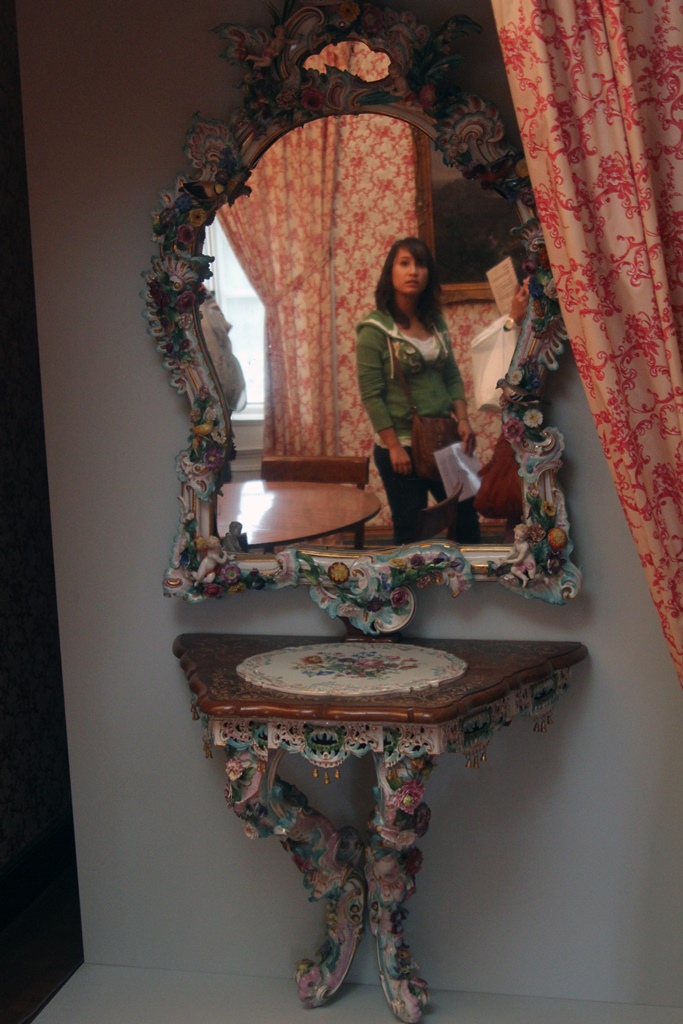
Connie and Small Table with Mirror
Farther to the west of the palace is a functioning windmill. The original windmill
that stood here pre-dated the palace, having been built during Frederick William I’s
time. It stood throughout Frederick the Great’s reign, but had to be torn down and
rebuilt late in the 18th Century. The replacement structure was destroyed during a
tank battle in 1945. The current replica was built in the 1990s.
Windmill, Tour Guides, Nella and Connie
We walked over toward the windmill and found an outdoor shop which featured
a number of yard decorations.
Nella and Frog Watering Can
At this point we decided to move on. We returned to the bus stop where
we’d been dropped off and caught the next bus to our next destination,
Frederick the Great’s other palace, the Neues Palais.

